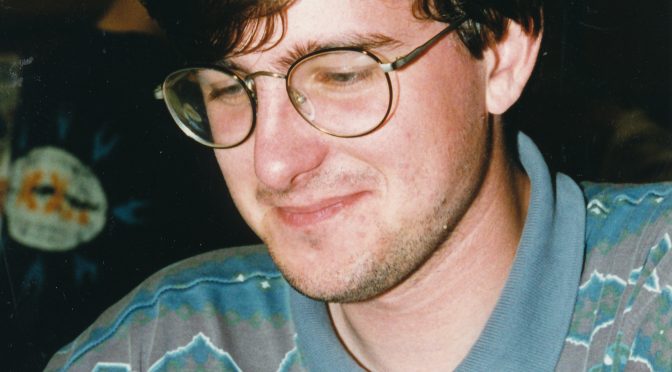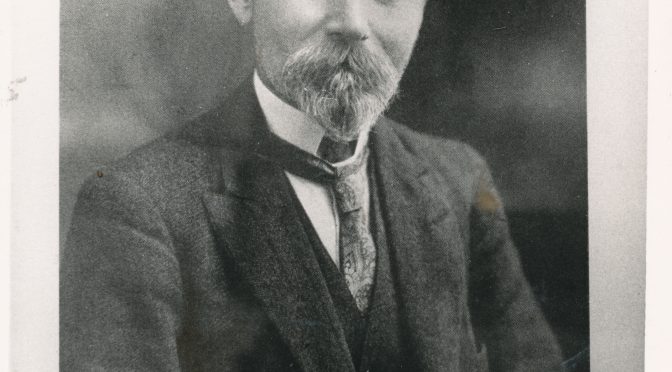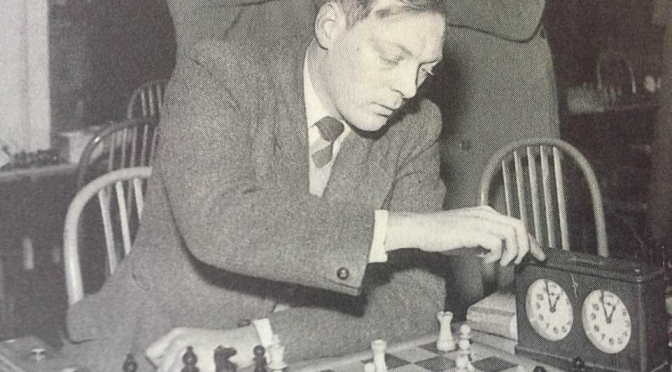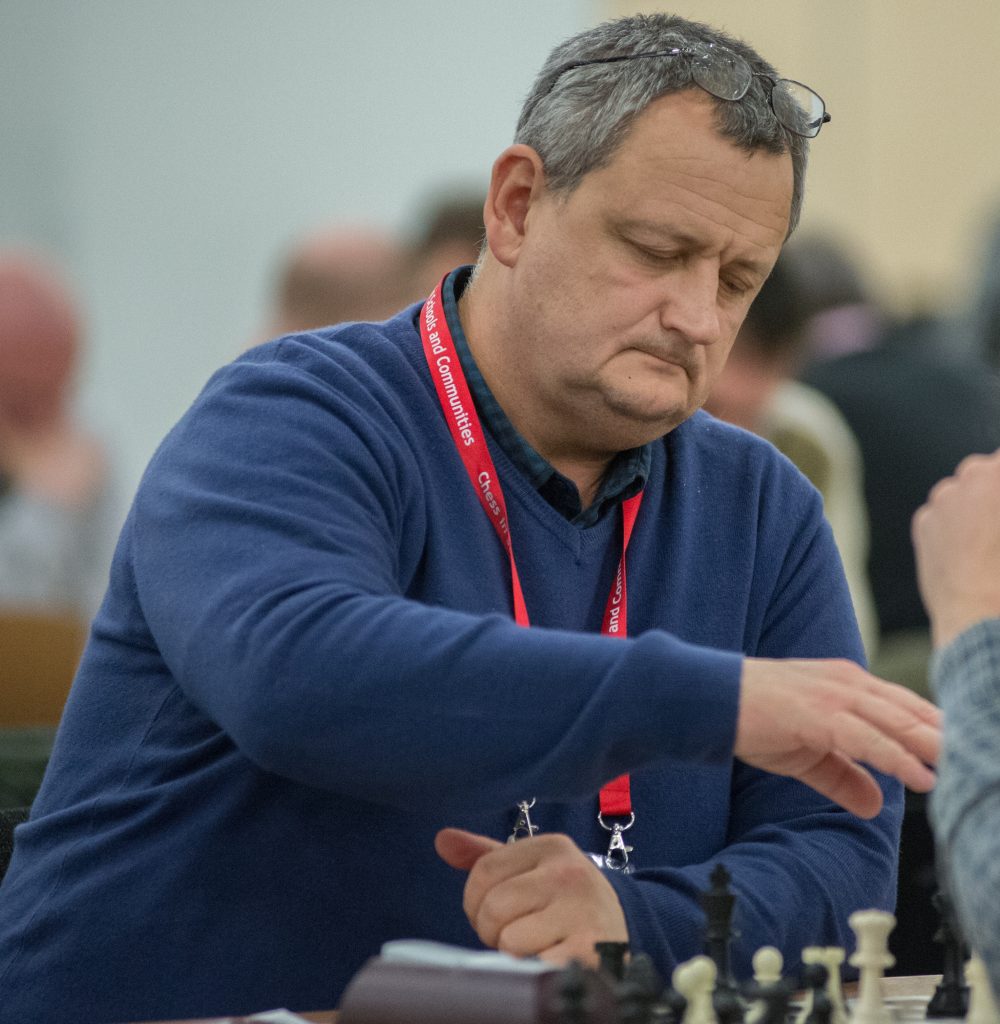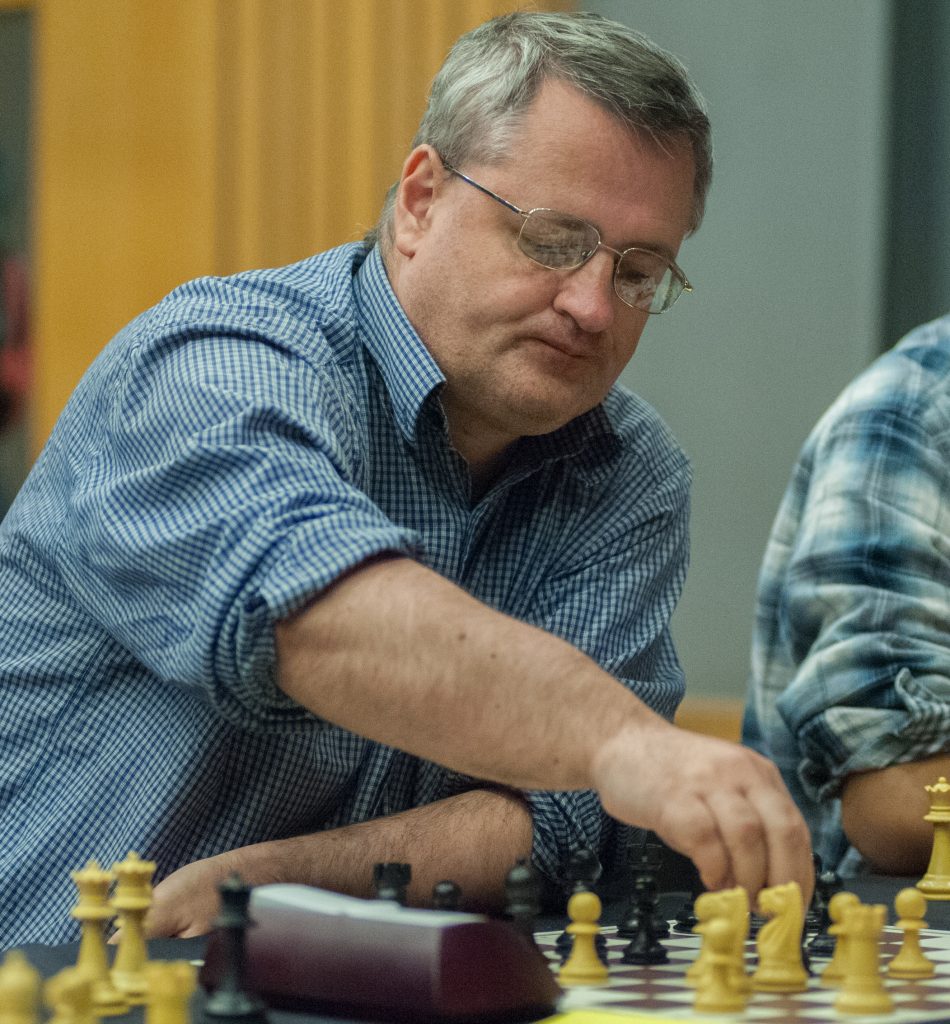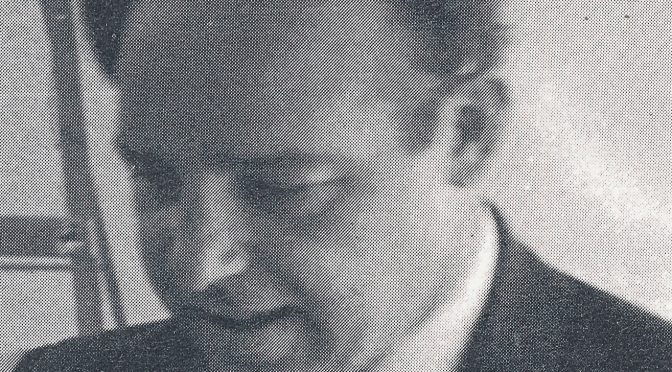BCN remembers Richard Griffith who passed away on December 11th, 1955.
Happy Birthday GM Matthew Turner (11-xii-1975)
We wish Happy Birthday to GM Matthew Turner born this day (December 11th) in 1975 in Lincolnshire.
His peak rating according to ChessBase was 2545 in October 2017 but he may well eclipse that being an active GM.
In 2011 Matthew changed his FIDE Federation to Scotland (from England) and is current (2019) Scottish Champion winning with 7/9
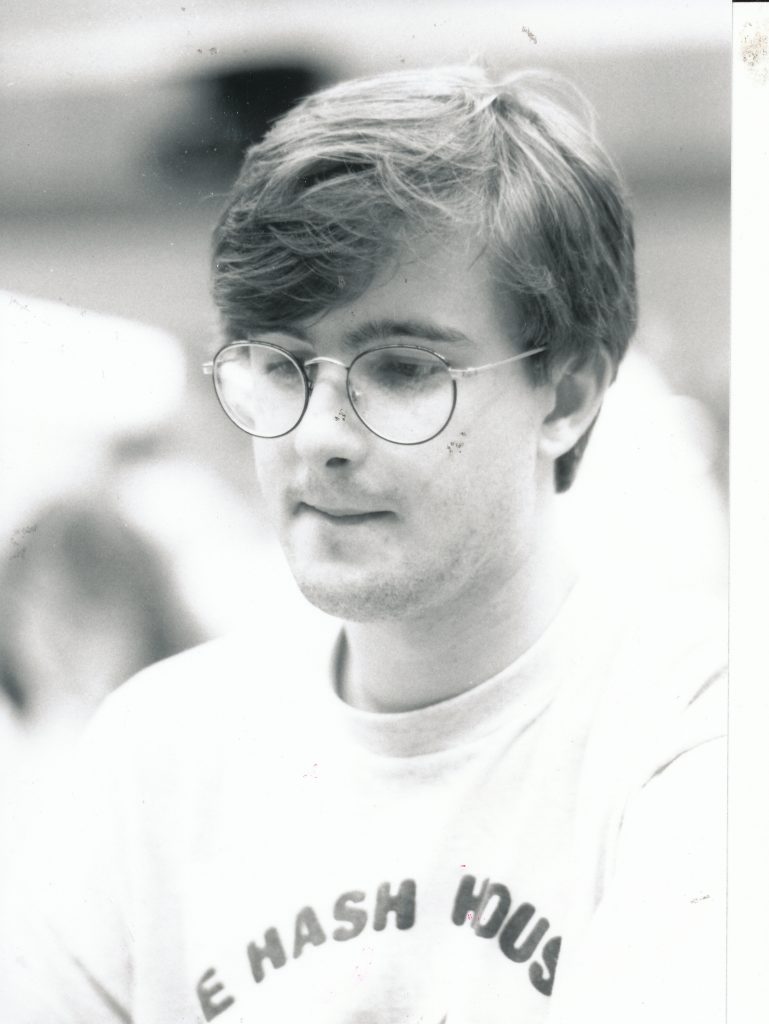
Matthew is chess tutor at Millfield School and has appeared with success on Countdown.
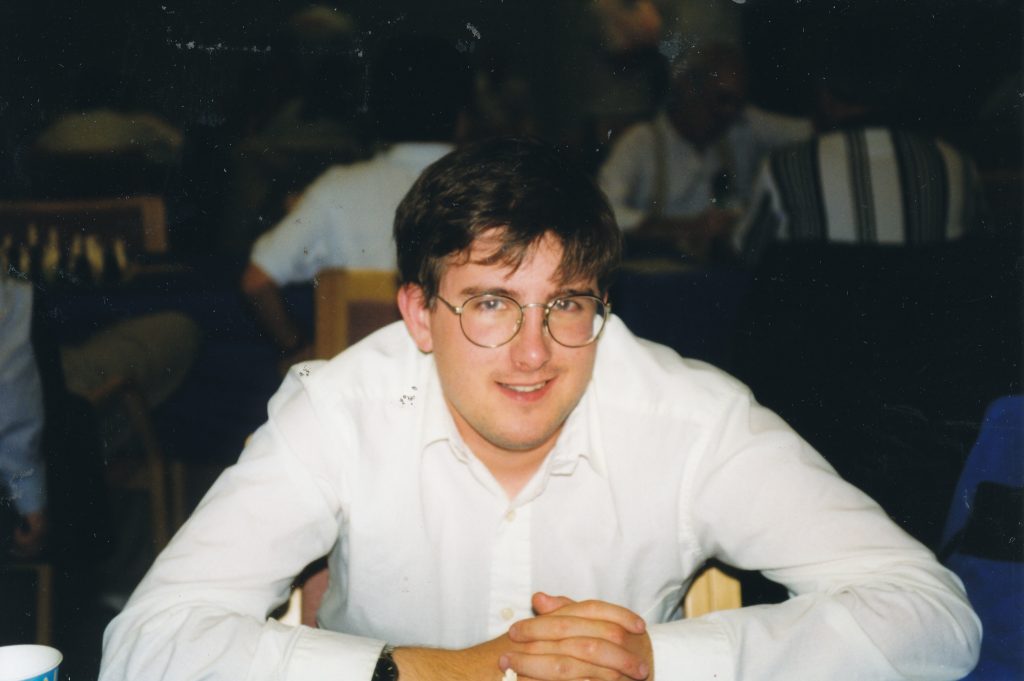
Matthew plays for Barbican in the Four Nations Chess League (4NCL)
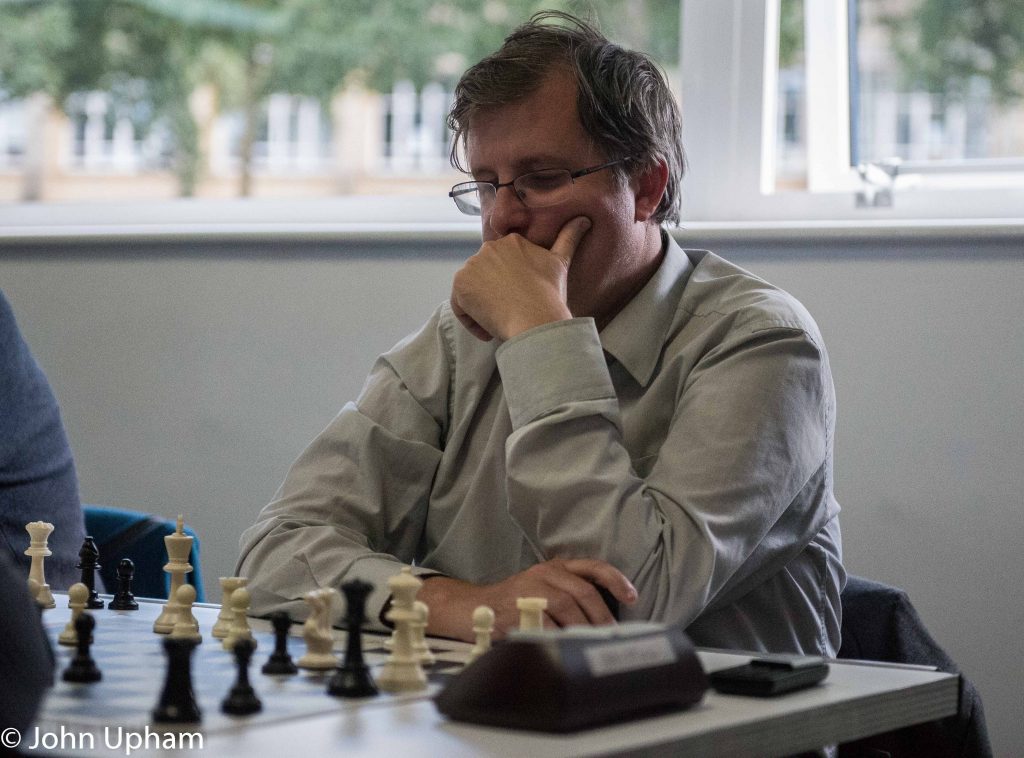
Remembering Joseph Blake (03-ii-1859 11-xii-1951)
We remember English player Joseph Blake who passed away on Tuesday, December 11th, 1951.
Joseph Henry Blake was born on Thursday, February 3rd, 1859 in Farnborough, Hampshire. His parents were Joseph Denner and Eliza Blake (née Early). In 1871 Joseph (aged 12) had a brother Frank (aged 10), sisters Annie (8), Elizabeth S (7), Eliza E (1) and a servant, Kate Longman aged 18. The family lived in Lydia Cottage, Hewitts Road, Millbrook, South Stoneham, Hampshire.
According to the 1861 census Joseph was two years old and living with his parents and Frank in Rotten Row, Yeovil, Somerset.
In 1881 the family has upped sticks again and moved to 2 St. Lawrence Road, Saint Mary, Eastleigh, Hampshire. This address is also given as the South West Telegraph Office. Eliza was now the head of the household and a widower. Apart from Eliza E aged 11 everyone worked for the railway.
In 1891 Joseph had become Head of the Household (aged 32) and they had acquired a servant (Anna M Cornell) and a blacksmith (Francis Cornell) from Braintree in Essex.
In 1900 Joseph married Alice New in Cheltenham, Gloucestershire. They lived at 24, Barton Road, Eastleigh, Hampshire. Tragically, Alice passed away in 1903.
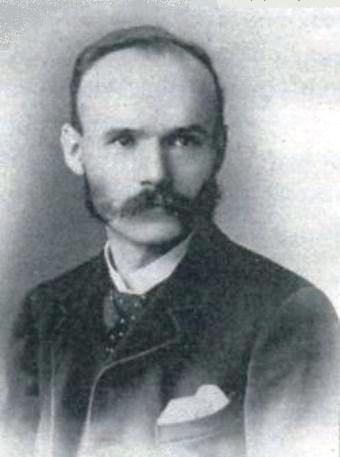
By 1911 Joseph was 52 and had retained his career as a Railway Clerk. He lived at 33, Broomfield Road, Tolworth, Surrey :

He is recorded as the head of a household of one and a widower.
In 1939 Joseph was living at 10 Springfield Court, Springfield Road, Kingston Upon Thames, Surrey. He was now retired.
No doubt there would have been other addresses not captured by the census records.
According to The Encyclopedia of Chess, (Batsford, 1977), Harry Golombek OBE :
“A leading British player in the 1890s and for many years editor of the Games Section of the British Chess Magazine between the two world wars. Blake’s best tournament performance came at the age sixty-three when, at Weston-super-Mare in 1922, he came 1st ahead of Maróczy, Kostić, Sir George Thomas and Yates.
The remarkable feature about Blake’s chess career is that he retained his skill and his comprehension of the game for a much longer period that most chess players. This extended from 1887 when he was 1st at the Counties Chess Association tournament at Stamford ahead of Bird and Pollock, a performance he was to repeat in 1891 at Oxford, to 1909 when he tied with H. E. Atkins for first place in the British Championship, to 1923 when he won the Weston-super-Mare tournament, right into the 1930s when he was principal annotator for the British Chess Magazine.”

and according to The Encyclopedia of Chess (Robert Hale, 1970 & 1976), Anne Sunnucks :
“One of the leading British players at the end of the last century and the beginning of the present century. Born on 3rd February 1859. Represented England in the Anglo-American cable matches in 1902 and 1909. His best results were 1st in the Counties’ Chess Association Tournament 1887, ahead of Bird and MacDonnell; =1st with HE Atkins in the 1909 British Championship, but lost the play-off for the title; 1st at Weston-super-Mare 1922 ahead of Maroczy, Kostich, Sir George Thomas and Yates, and winner of the brilliancy prize for his game against Sir George Thomas; 2nd in the international correspondence chess tournament organised by Le Monde Illustre in 1895.
Blake was President of the Southern Counties Chess Association in 1911 and President of the Hampshire Chess Association from 1910-1912 and from 1927-1929. He was also Hon. Secretary of the City of London Chess Club for some years.”
According to Tim Harding in the excellent Correspondence Chess in Britain and Ireland, 1824-1987 :
Railway clerk Joseph Henry Blake, the leading English correspondence player of the 1890s; also a strong OTB amateur player. He was a regular contributor to British Chess Magazine from the 1880s to the late 1930s.
In British Chess Magazine, Volume XXXIX (39, 1919), Number 3 (March) we have the following from Julius du Mont : “I presume it relates more particularly to chess professionals in this country, at any rate, it does not seem to me that the jews hold rank amongst first-class amateurs in proportion to their numbers.
In London there are very few if any of the class of RC Griffith, GA Thomas, JH Blake, HG Cole, EG Sergeant, and many others to say nothing of the younger recruits , W.Winter and RHV Scott.”
From the 1949 British Chess Magazine (written by RN Coles) we have this :
JH Blake is Ninety
After an absence of ten years I looked in recently on the Kingston and Thames Valley Chess Club. There were many new faces and a number of familiar ones, among the latter one of rosy countenance, trim beard and twinkling eyes, none other than JH Blake, more vigorous than ever and attaining his 90th birthday on the 3rd February.
Twenty years ago in this same club I (RN Coles) was learning the game, now middle age approaches. Blake was an elderly man in those days, who had retired from all competitive play because of the strain it imposed; now, so far from showing the weight of years, he is back in competitive chess again. He won the club championship last year and is in a fair way to repeating his victory this year. Of all the ‘Grand Old Men’ of chess, few have still been champions in their 90th year.
Older readers of the BCM will remember him as their Games Editor for many years, but few memories will cover the whole series of his successes beginning with a 1st at Stamford in 1887. Even 1922 must seem a distant year to the generation of today. That was the year that Maroczy and Kostic were invited to Weston-super-Mare to meet such rising young English masters as FD Yates and Sir George Thomas. And the first prize amongst those talented players was won by JH Blake, who had been born just when Morphy returned to England after his Paris Victory over Anderssen !
All readers of the BCM and all players everywhere will wish Britain’s oldest master continued health and increasing vigour, and those who knew him today will be surprised if he does not continue his attack for another decade at least.
Besides winning the first prize at Weston Blake also won the brilliancy prize with the following game : (#10,229)
British Chess Magazine, Volume LXXII (72, 1952), Number 2 (February), pp.44-46 contained an obituary with articles from MDB* :
*(Careful investigation by Richard James suggest that MDB is Mabel Dorothy Barker, JHB’s niece in 6th Cross Road.)
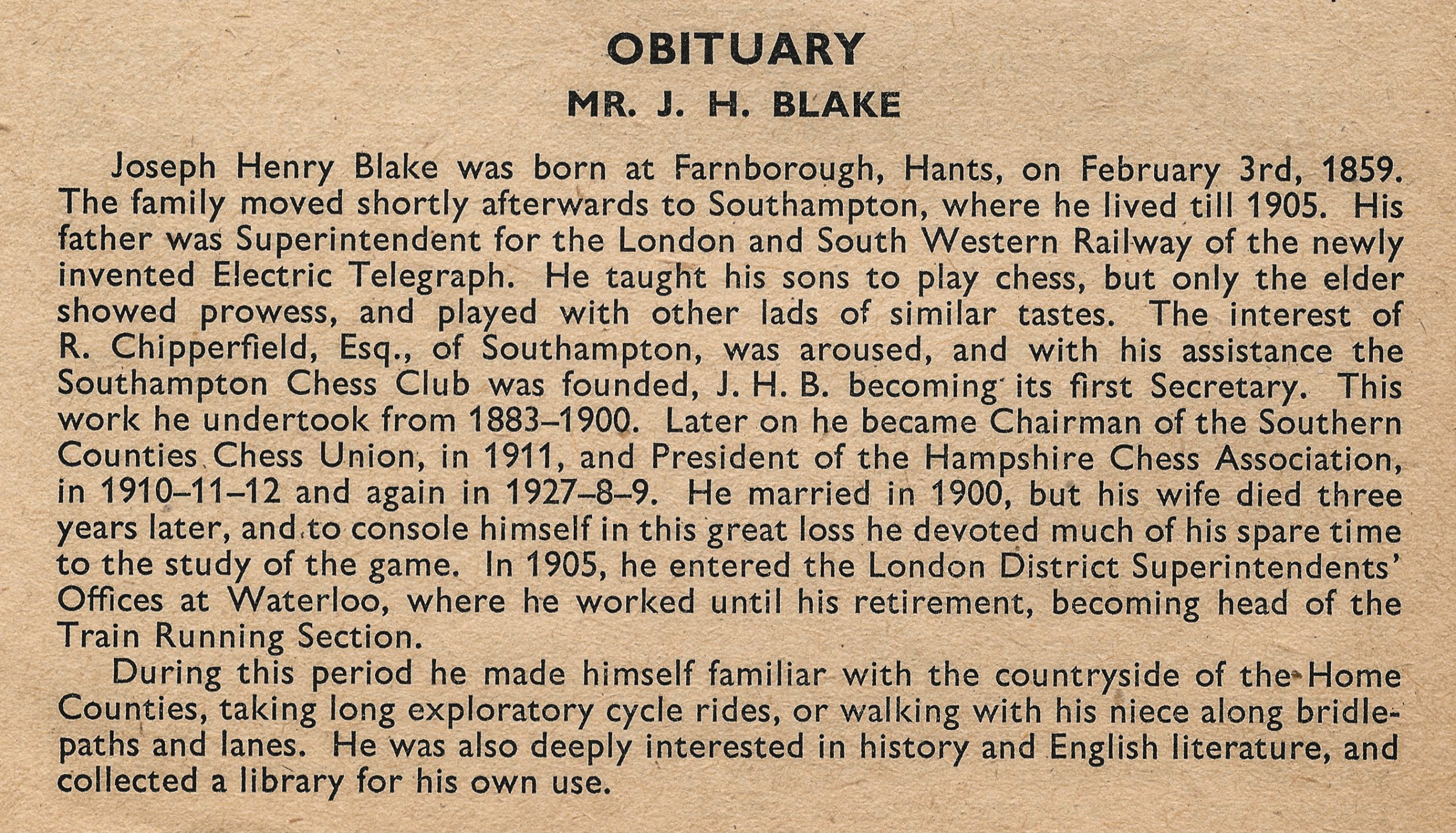
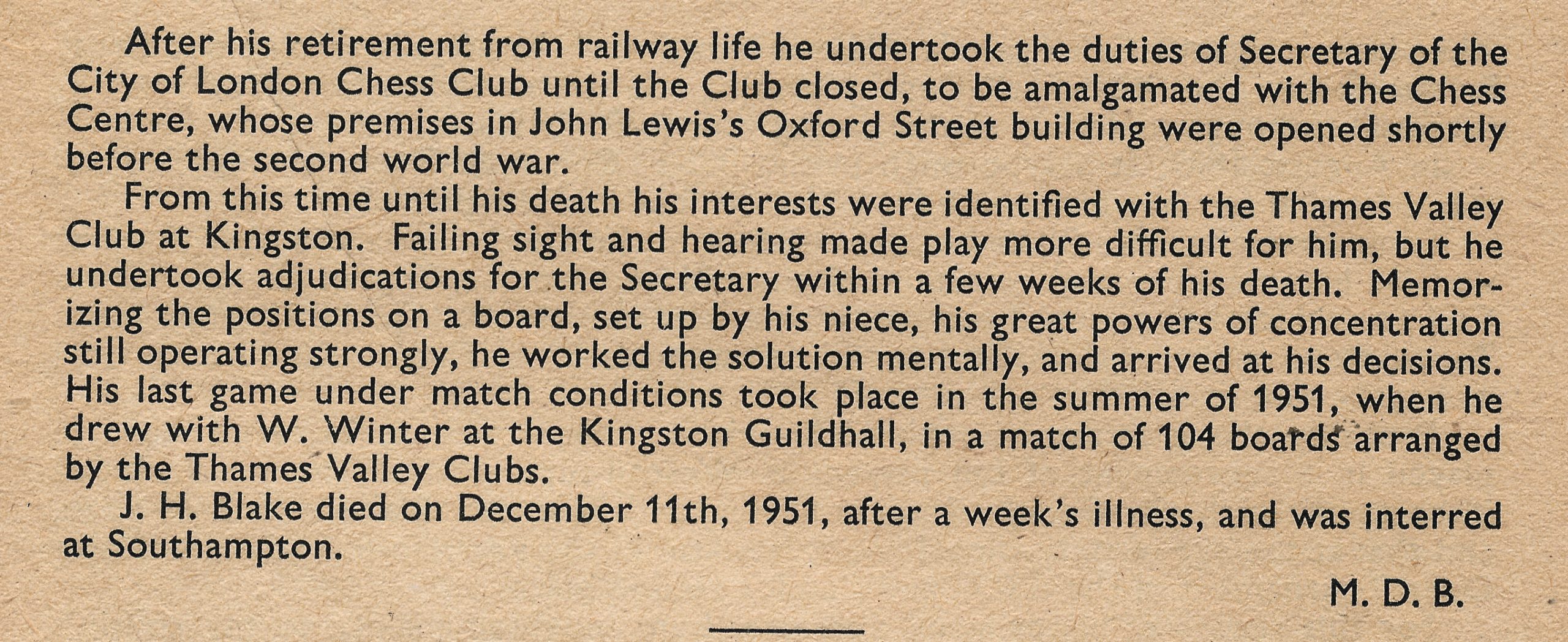
and EG Sergeant :
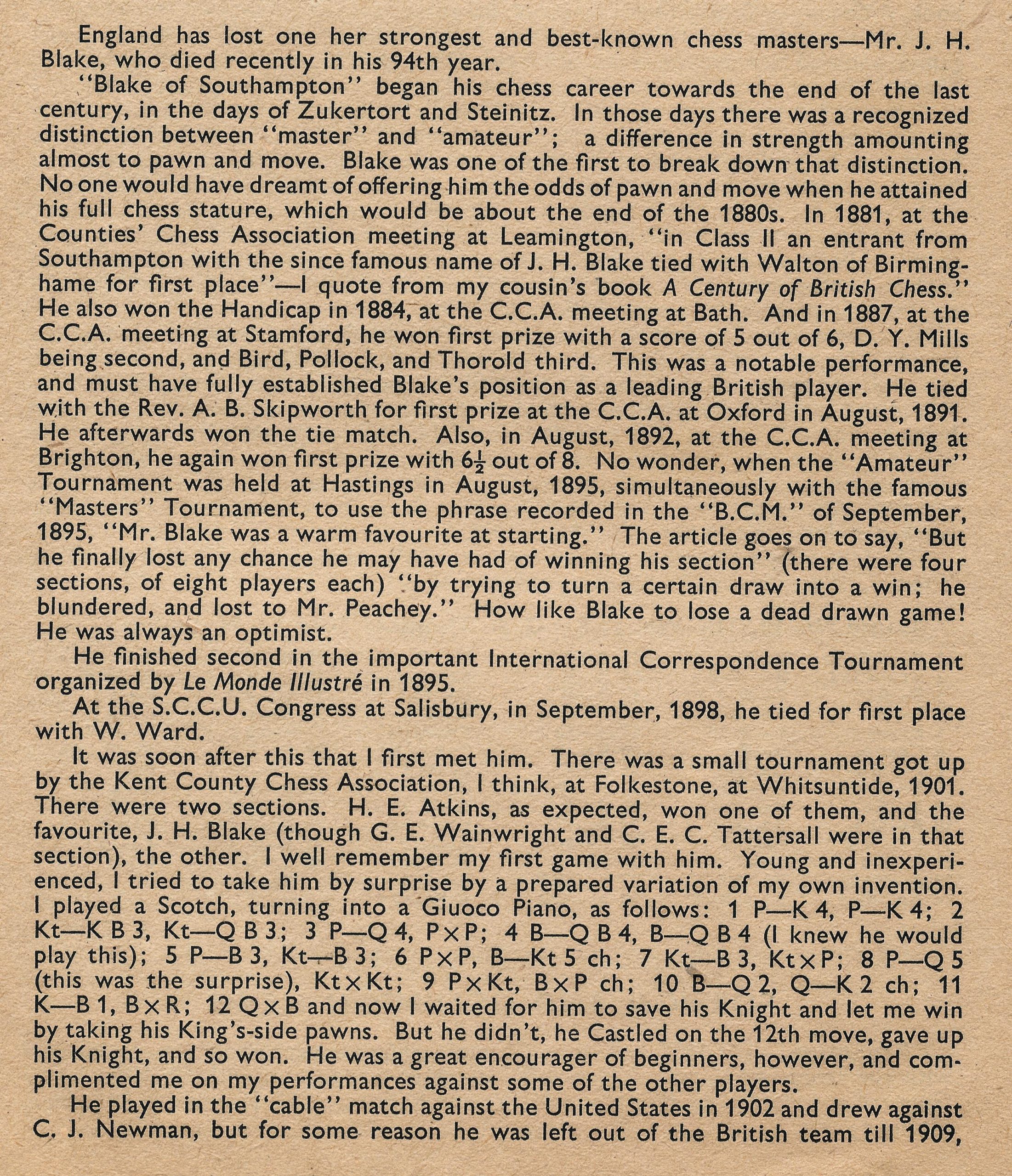
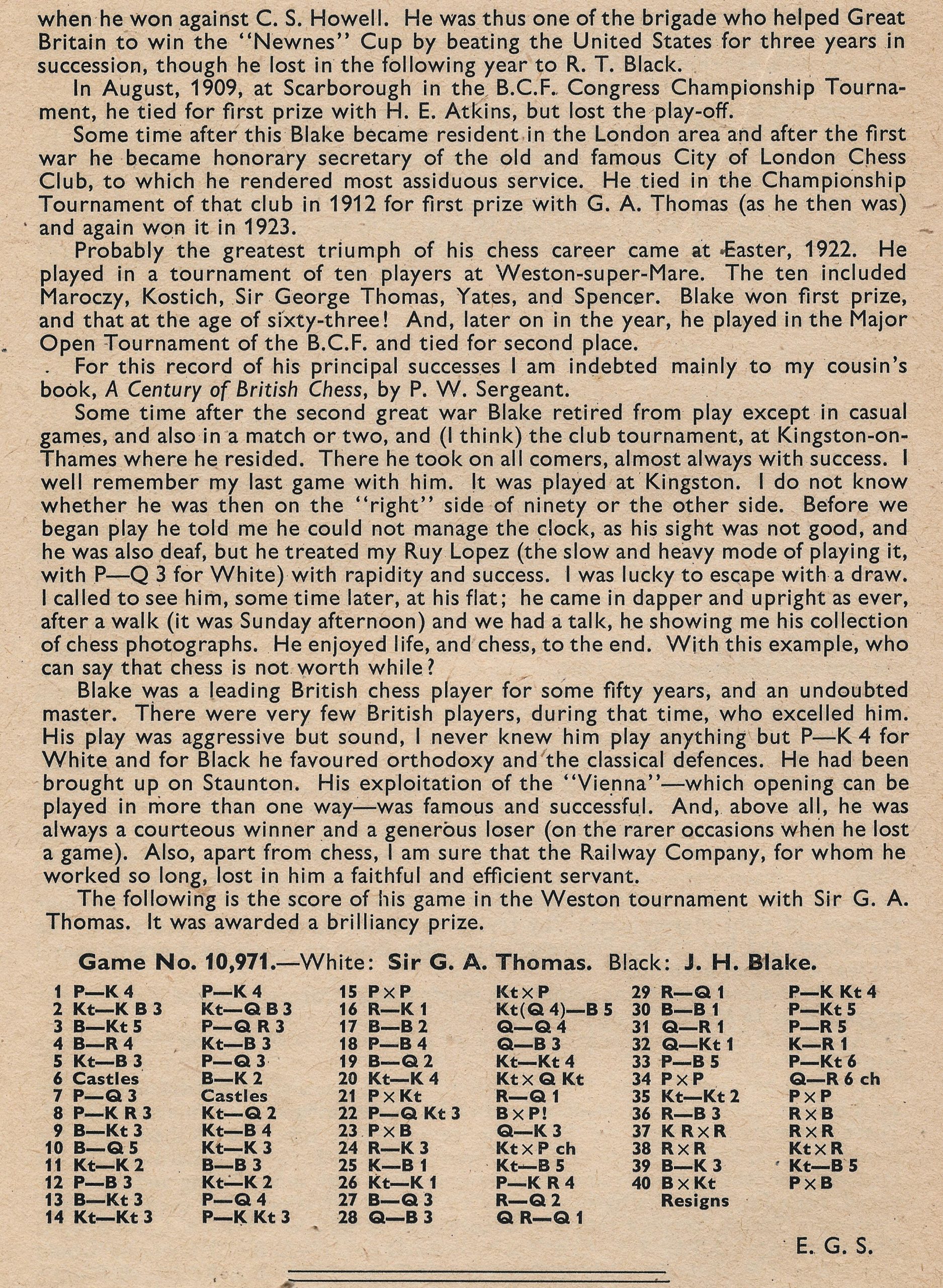
For more on this game and its often mis-reported continuation see this article from Edward Winter.
From Wikipedia :
“Joseph Henry Blake (3 February 1859, Farnborough, Hampshire – 11 December 1951, Kingston-upon-Thames) was an English chess master.
Blake won many tournaments played in England toward the end of the 19th century and the beginning of the 20th century. He won at Stamford 1887, Oxford 1891 (joint), Brighton 1892, Cambridge 1893, and Salisbury 1898 (joint). He also took 5th at Manchester 1882, tied for 3-4th at Birmingham 1883 (Section B), took 4th at Bath 1884, tied for 6-8th at London 1889 (Henry Bird won), took 2nd at Cambridge 1890, tied for 3rd-4th at Woodhall Spa 1893, shared 2nd at Craigside 1895, took 3rd at Hastings (Amateur) 1895, took 2nd, behind Henry Ernest Atkins, at Bristol 1896, and won at Folkestone 1901.
He took 2nd in an international correspondence tournament organised by Le Monde Illustré in 1895, shared 1st in the 1909 British Championship in Scarborough but lost to Atkins the play-off, and shared 1st at London 1911. He was British correspondence champion in 1922.
Blake represented England in cable matches against the United States in 1902, 1909 and 1910.
His best achievement was victory, ahead of Géza Maróczy, George Alan Thomas, Fred Yates and Boris Kostić, at Weston-super-Mare 1922. He shared 2nd at London 1922 (Major Open), tied for 7-8th at Hastings International Chess Congress 1922/23 (Akiba Rubinstein won), took 2nd, behind Thomas, at London 1923, took 5th at Liverpool 1923 (Jacques Mieses won), tied for 7-8th at Hastings 1923/24 (Max Euwe won), tied for 6-7th at Weston-super-Mare 1924 (Euwe won), took 2nd, behind R.P. Michell, at London 1925, took 4th at London 1926 (Victor Buerger won), and tied for 7-9th at Weston-super-Mare 1926 (Euwe won).”
He is the author of Chess endings for beginners (London 1900).
Best wishes FM Peter Batchelor (10-xii-1996)
Best wishes to FM Peter Batchelor on his birthday.
Peter J Batchelor was born on Tuesday, December 10th, 1996. “Breath” by The Prodigy was the UK Number One Single. His father is the player Guy Batchelor.
Peter’s first recorded rapidplay event was on the 17th of July 2005 in the Barnet Knights Under-9 tournament where he scored 4/6 and his first (!) standard play event was on August 20th 2005 being the British Land UK Terafinal which was not such a happy result.
His first published ECF grading was 56E in July 2006 at the age of ten with a rapidplay grading of 57A.
Peter played league chess in the Middlesex and London Leagues playing initially for Willesden & Brent and then with Wanstead & Woodford both with his father Guy.
Peter attended the Capital City Academy which is a “specialist sports and arts Academy in Willesden, North West London, in the borough of Brent.” He has returned there post-graduation to teach chess and run the school chess club.
Peter studied mathematics at the University of Warwick and now lives in London.
According to Ben Purton : “I captain Peter in the 4NCL chess league, he is one of the most professional and talented players on my squad. He is extremely smart and nice to be around. Peter would be an asset to any organisation in the future and any graduate scheme would be foolish not to take such a person on.
I have seen him grow in to one of the best U21 chess players in the UK and hope to see him gain his IM title soon.”
Peter became a FIDE Master in 2015 and, according to Felice and Megabase 2020 his peak FIDE rating was 2365 in December 2016.

Peter plays for Grantham Sharks in the Four Nations Chess League (4NCL).
With the white pieces Peter plays the Queen’s Gambit and the Trompowsky Attack.
As the second player Peter plays the Classical variation of the Caro-Kann and the Alartortsev Variation.
On chess.com Peter plays under the nom de plume of Pbatch.
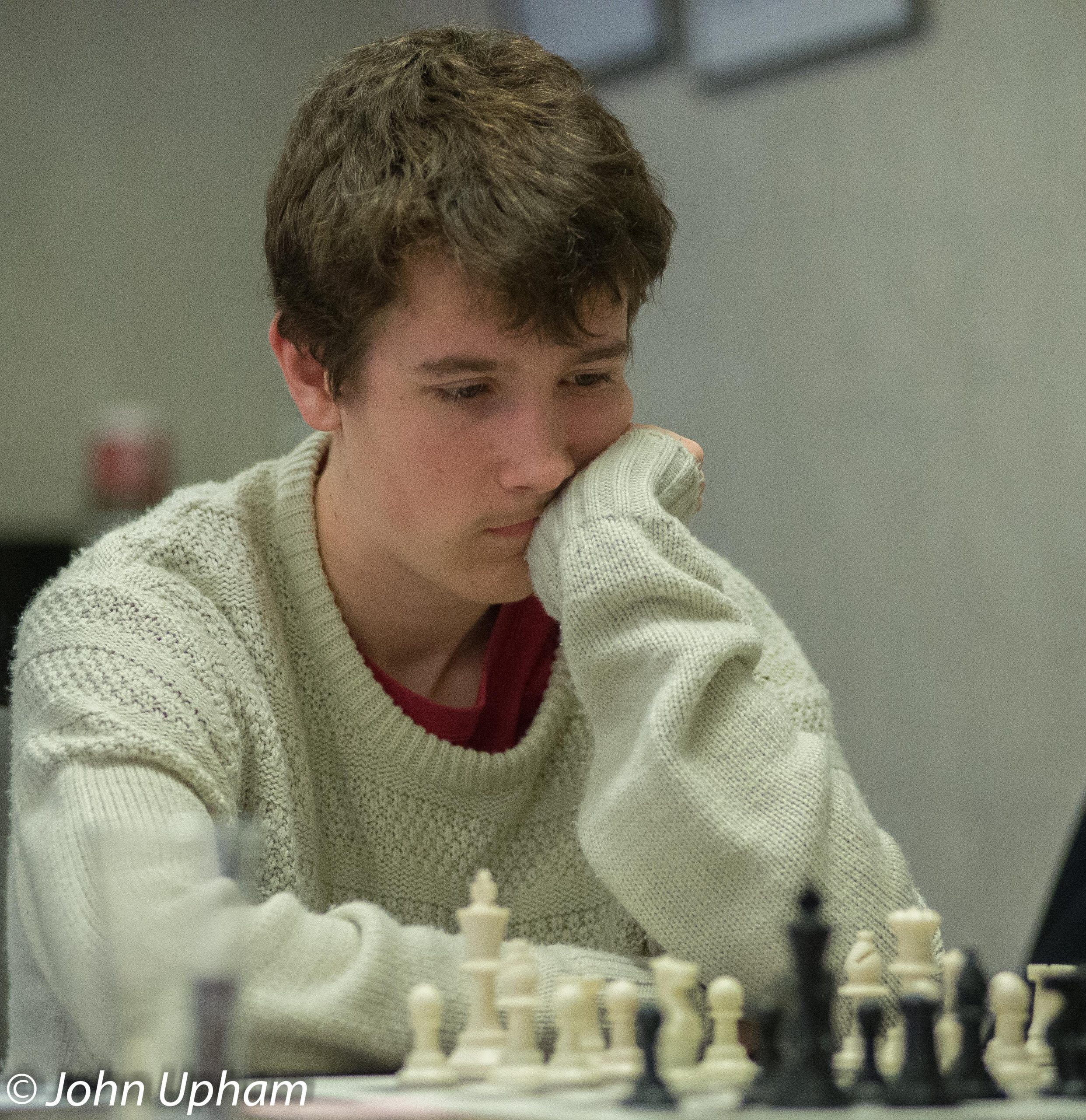
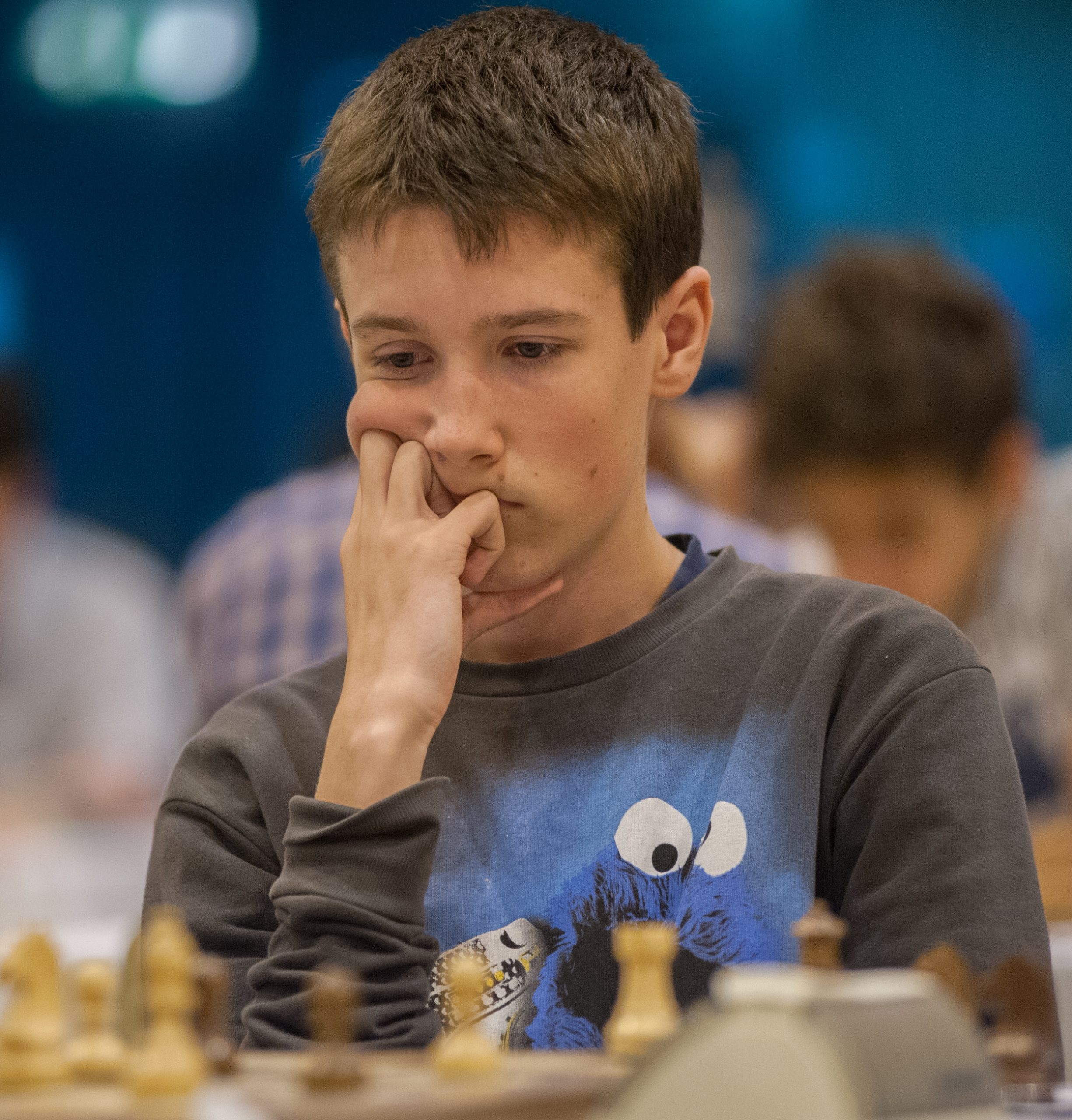
Happy Birthday WGM Dr. Jana Bellin (09-xii-1947)
Happy birthday WGM Dr. Jana Bellin on this day (December 9th) in 1947.

From The Encyclopedia of Chess (Robert Hale, 1970 & 1976), Anne Sunnucks :
“International Woman Master (1969), Czech Woman Champion in 1965 and 1967 and British Woman Champion since 1970.

Jana was born in Prague on the 9th December 1947 and learned to play chess at the age of eleven. She made her first appearance in the international field when she played 2nd board for Czechoslovakia in Women’s Chess Olympiad in Oberhausen in 1966.
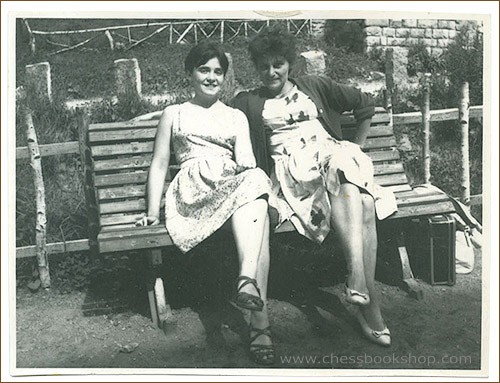
In the same year she represented Czechoslovakia in the Zonal tournament at Varna and came 11th.

She is now married to the British International Master, William Hartston, and played 1st board for England in the Women’s Chess Olympiad in Skopje in 1972 and represented England in the Zonal tournament in Wijk aan Zee in 1973 in which she tied for 1st place. In the same year she came =6th in the Interzonal Tournament. She is a doctor.”
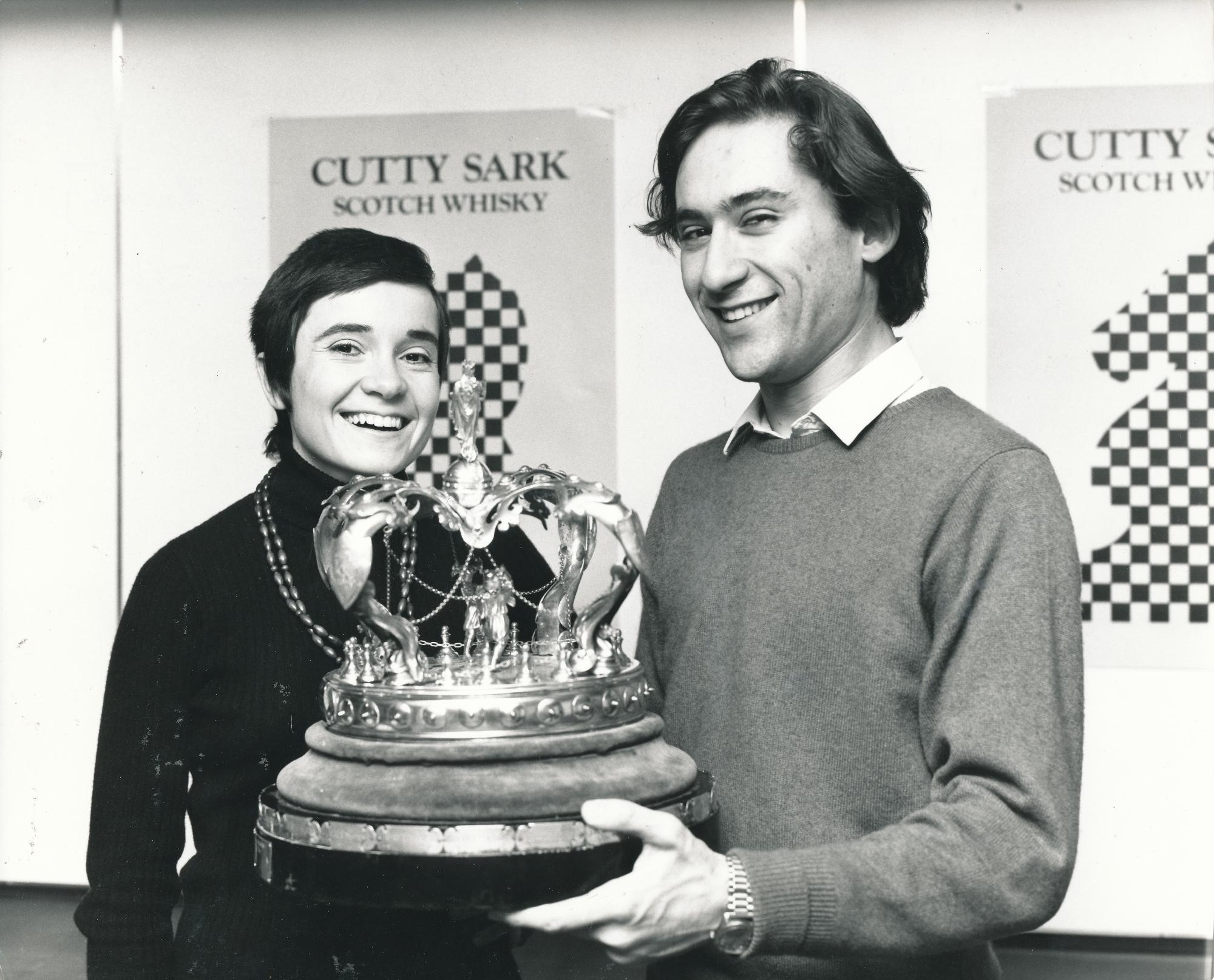
From The Encyclopedia of Chess (Batsford, 1977), Harry Golombek OBE :
“Born in Prague, Czechoslovakia, but moved to England in 1970 after her marriage to WR Hartston. Czechoslovak Woman champion in 1965 and 1967 (under her maiden name of Malypetrova) and British Ladies champion in the five years 1970 to 1974. International Woman master since 1969.”
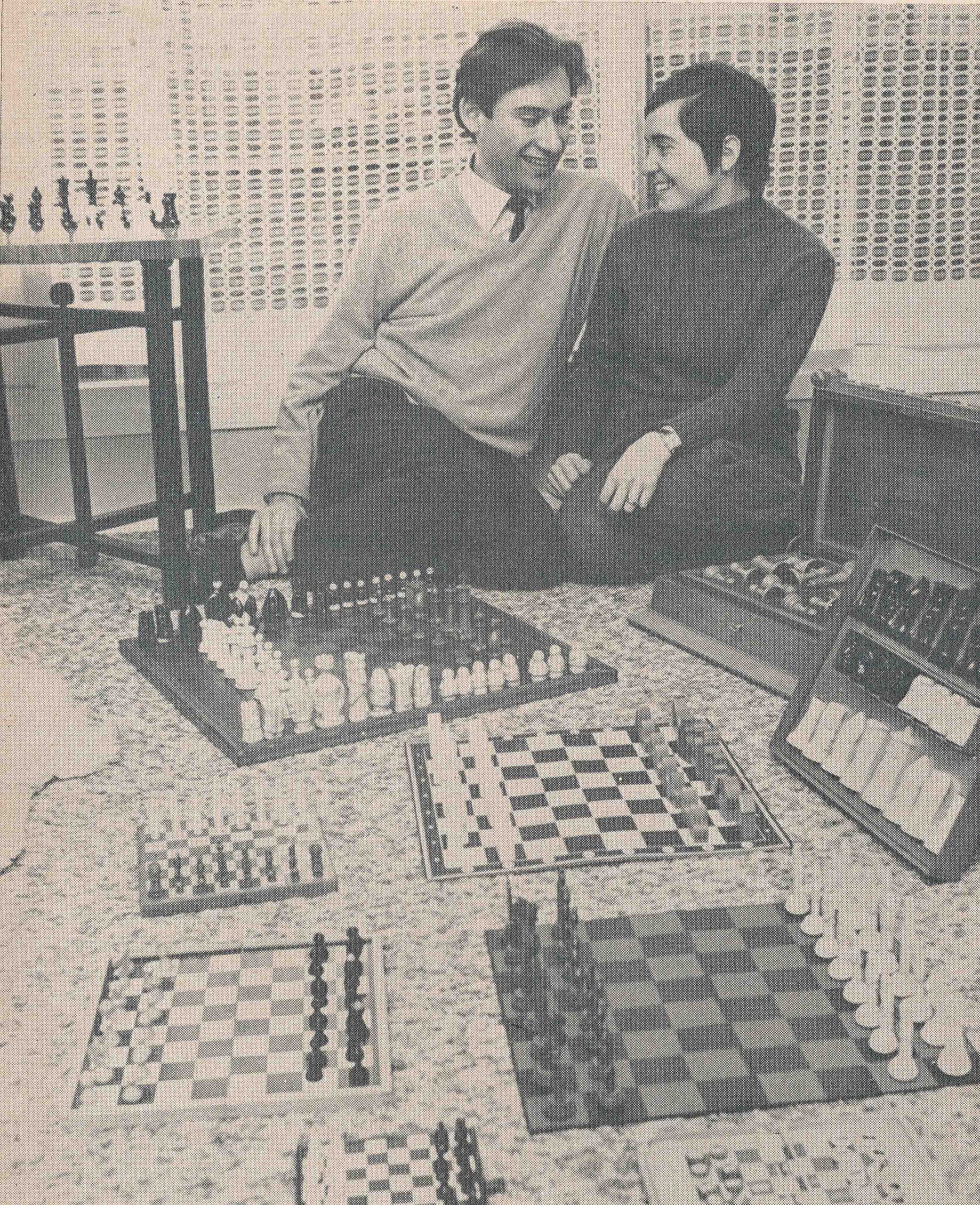
From British Chess (Pergamon Press, 1983) Botterill, Levy, Rice and Richardson :
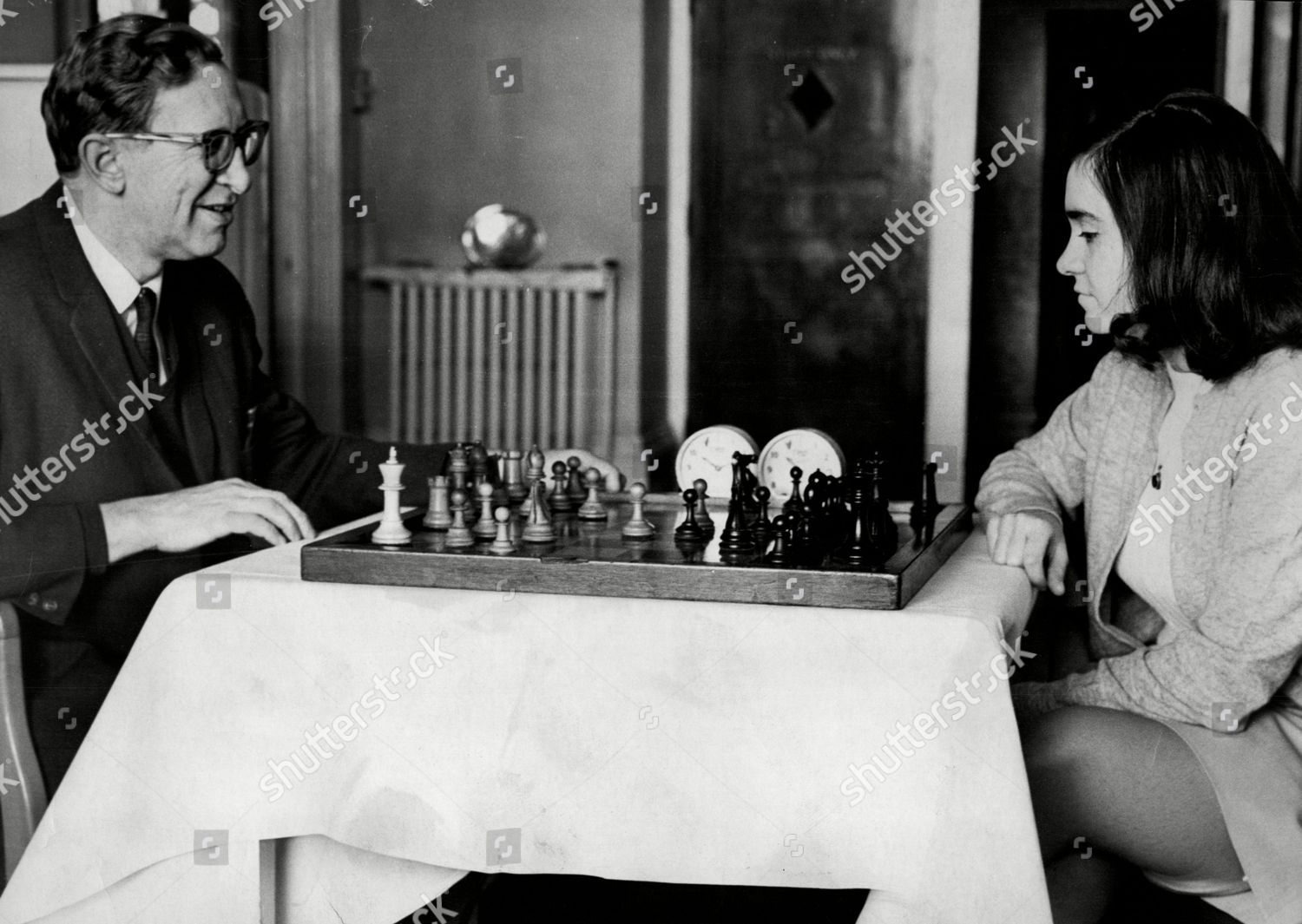
“Jana Miles was born 9 December 1947 in Prague, Czechoslovakia. She moved to England when she married Bill Hartston. Divorced from Hartston in 1978, she subsequently married Tony Miles.
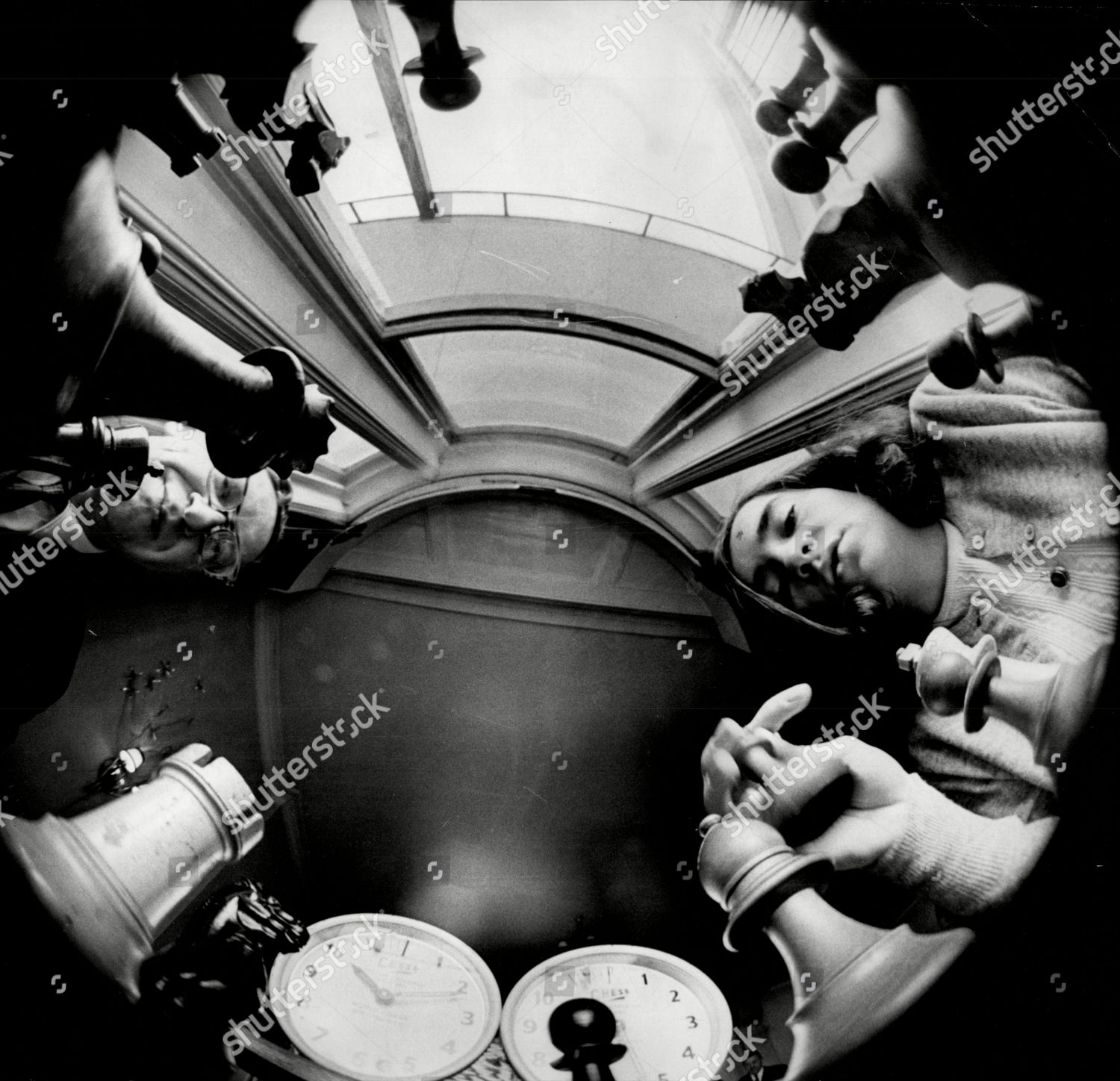
She was Czech woman champion in 1965 and 1967 and has regularly been the British Ladies Champion since moving to this country. She is a doctor of medicine.”
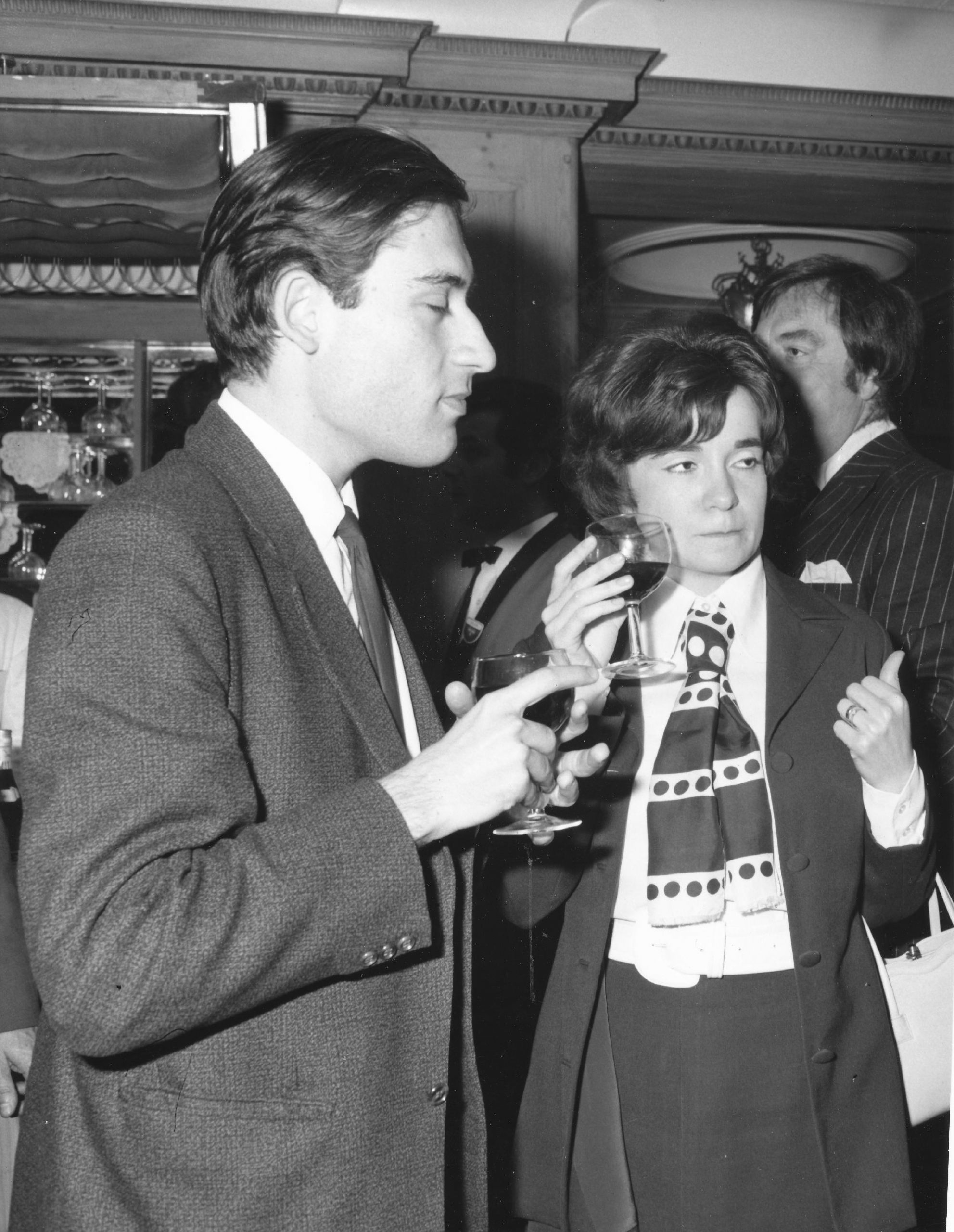
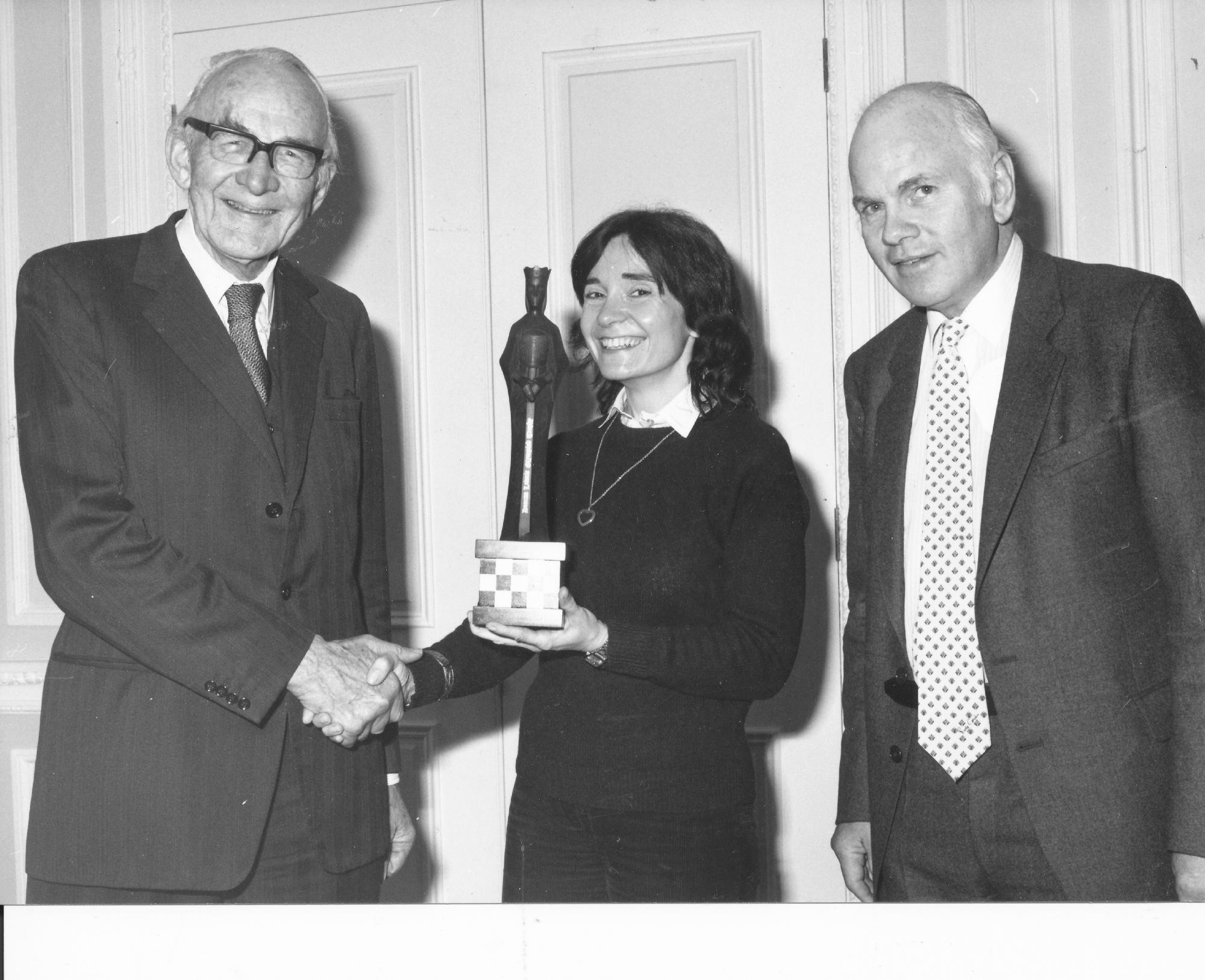
From Wikipedia :
“Jana Bellin (née Malypetrová; born 9 December 1947) is a British, formerly Czechoslovak chess player. She was awarded the Woman International Master chess title in 1969 and the Woman Grandmaster title in 1982.
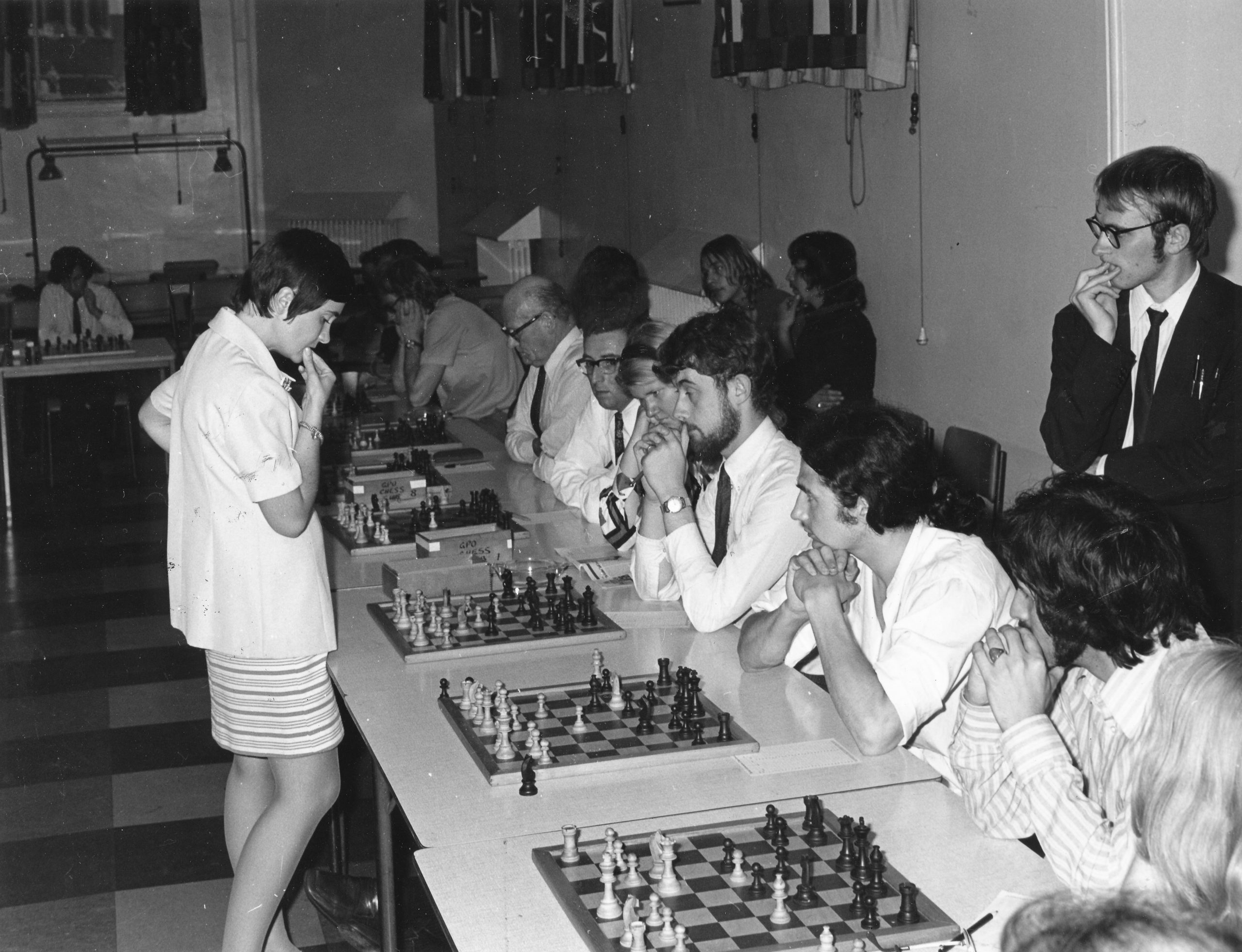
Bellin was born in Prague, Czechoslovakia. She was the Czech Women’s Champion in 1965 and 1967 under her maiden name of Malypetrová. After her marriage to William Hartston she moved to England in 1970 and won the British Women’s Championship in 1970, 1971, 1972, 1973, 1974, 1976, 1977 (after a play-off), and 1979.
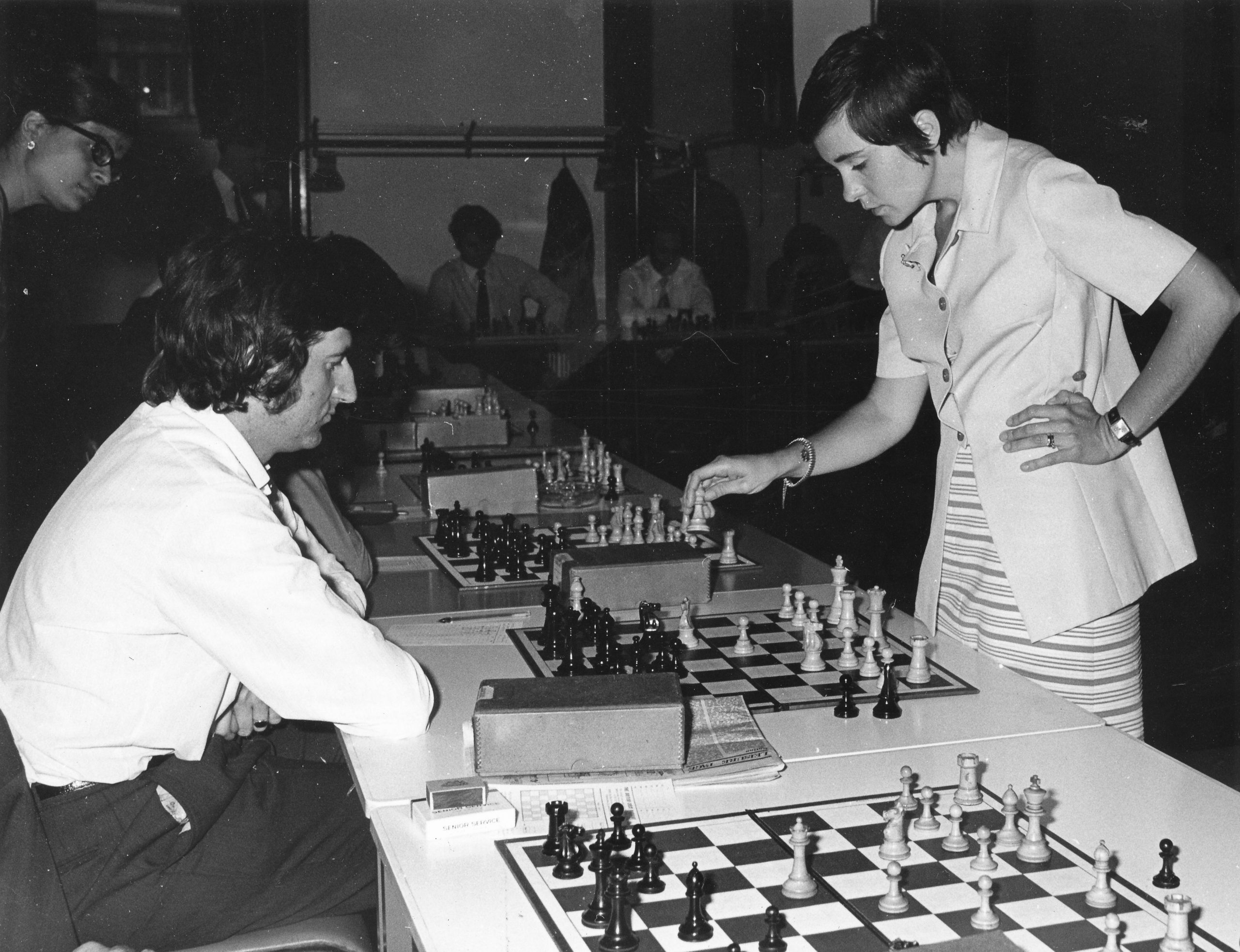
She has fifteen appearances in the Women’s Chess Olympiads, representing Czechoslovakia in 1966 and 1969 and England thirteen times from 1972 through 2006, seven times on first board.
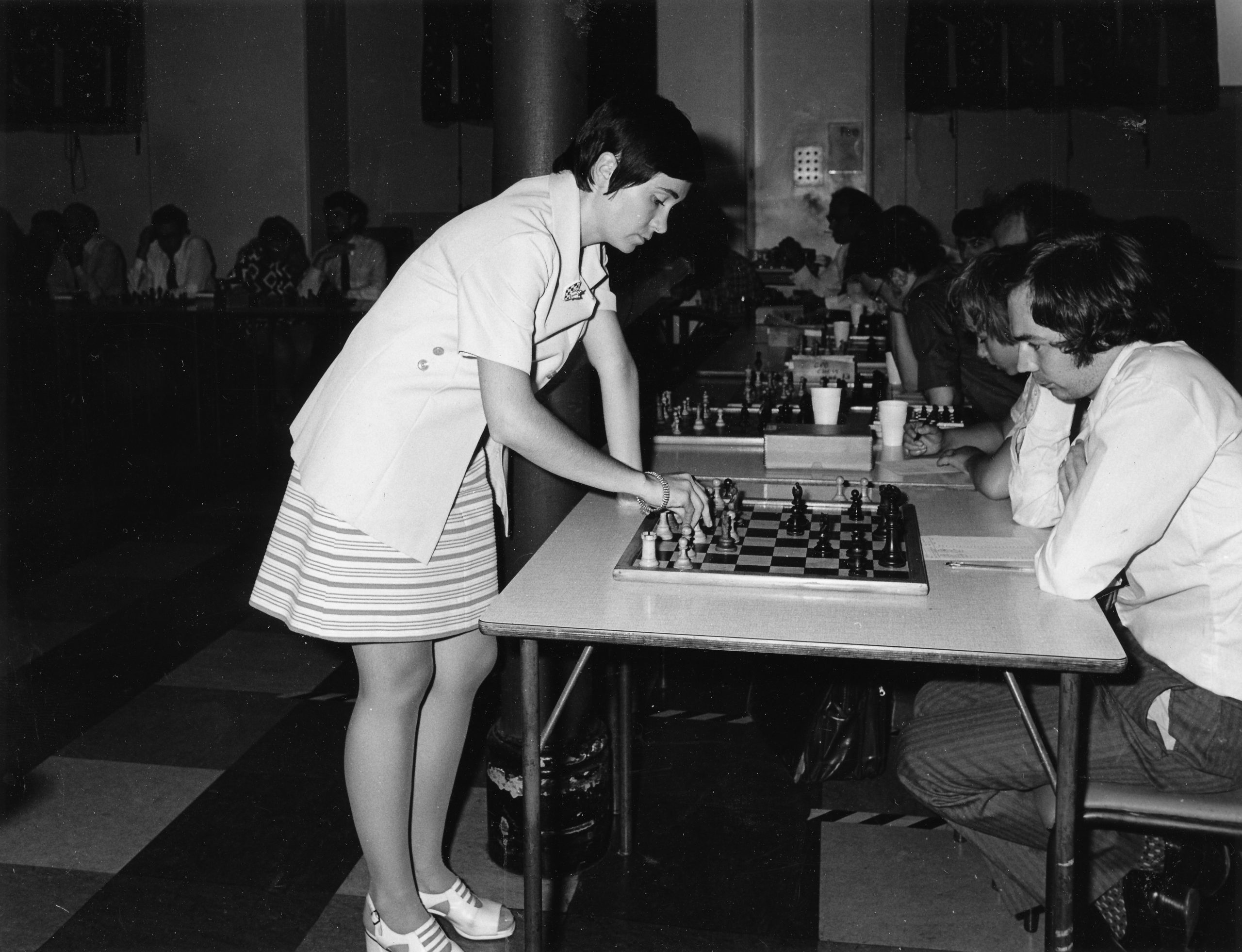
At the Olympiad she earned individual silver medals in 1966 and 1976, a team bronze medal in 1968 with the Czechoslovakian team, and a team silver in 1976 with England.
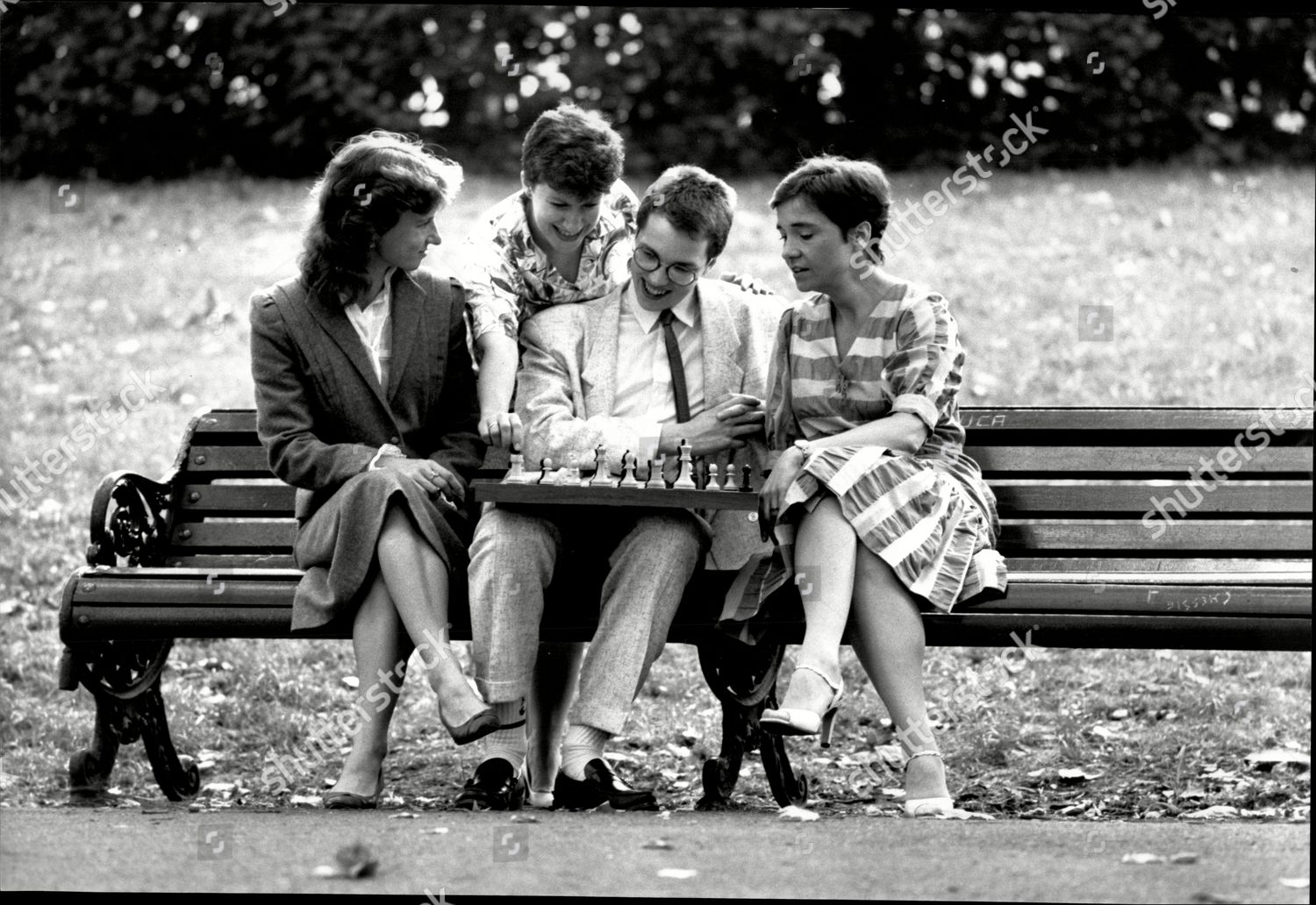
“Bellin is a medical doctor specialising in anaesthetics, and works in intensive care at Sandwell General Hospital, West Bromwich, England.
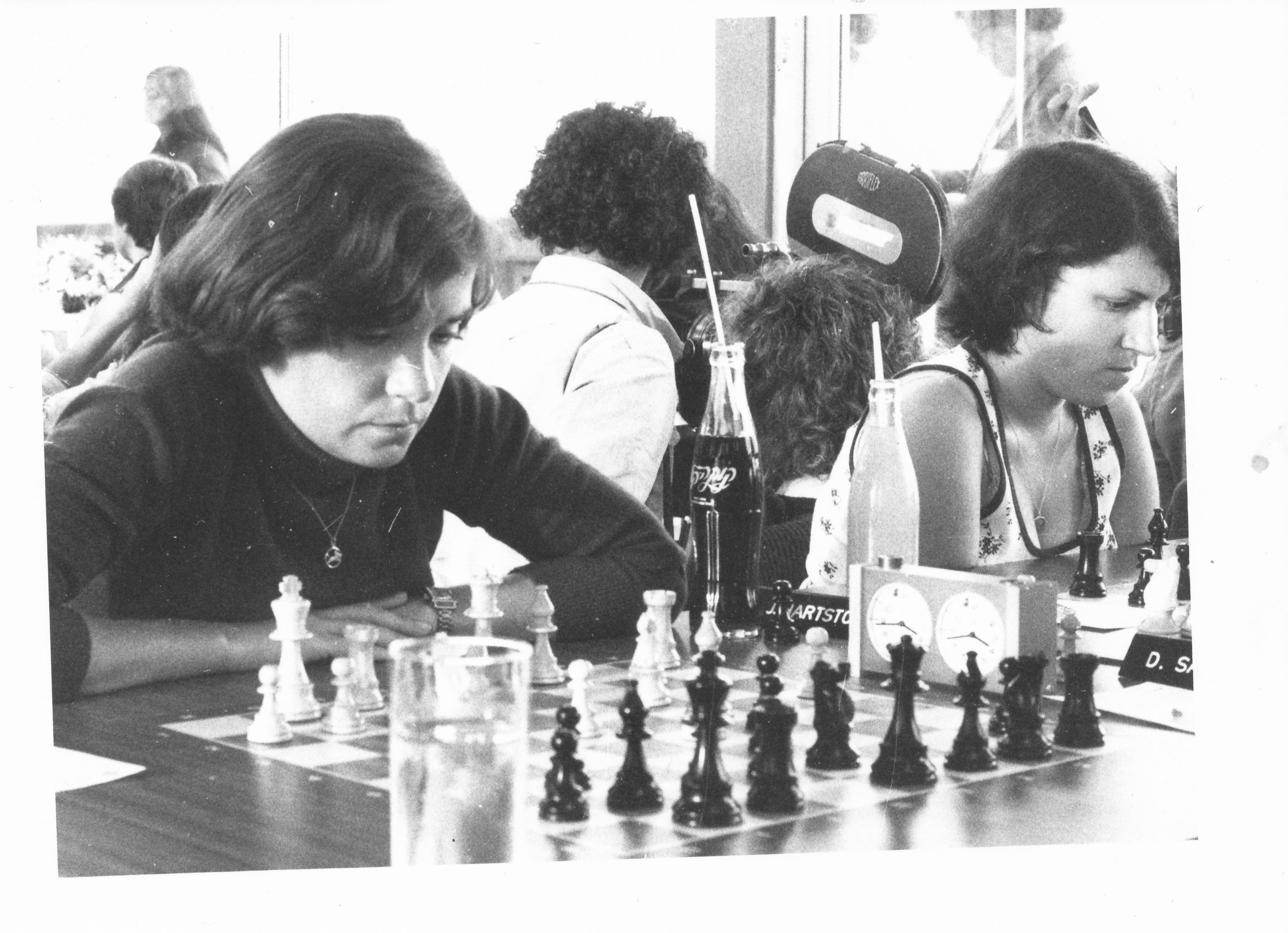
She is also Chairman of the FIDE Medical Commission, which supervises drug testing of chess players.
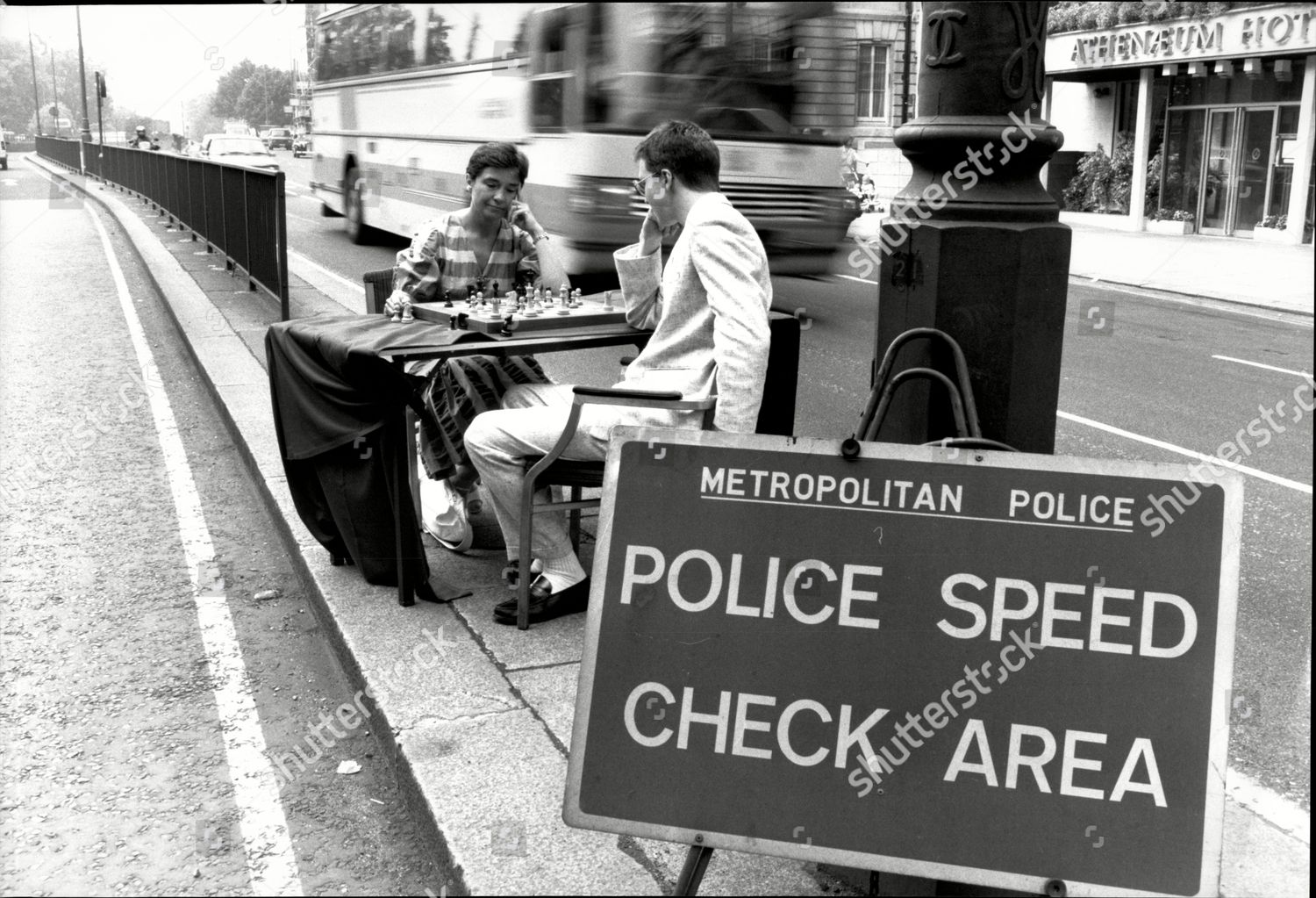
Bellin was married first to International Master William Hartston, then to Grandmaster Tony Miles, and after that to International Master Robert Bellin. She and Bellin have two sons: Robert (born 1988) and Christopher (born 1991).”
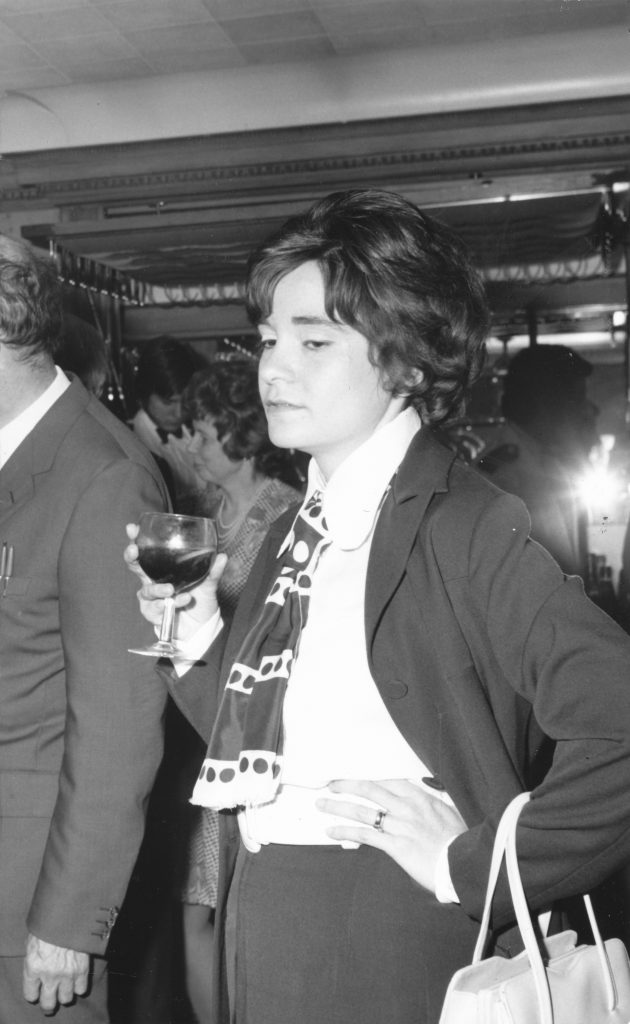
She is the granddaughter of thrice Prime Minister of Czechoslovakia, Jan Malypetr. and cousin of author and human rights campaigner Jiří Stránský.
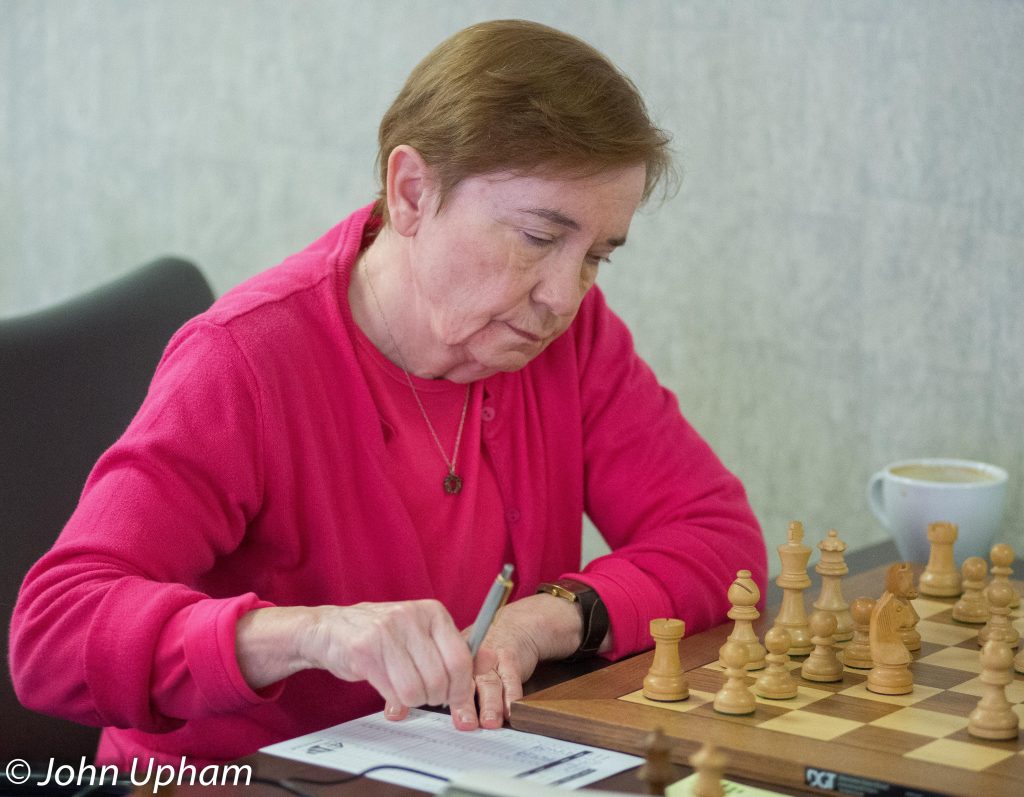
Remembering John Fuller (12-v-1928 08-xii-2004)
We remember John Fuller who passed away aged 76 on Wednesday, December 8th 2004. His death was recorded in the district of Lancaster. At the end of his life he lived in Carnforth, in Lancashire.
John Arthur Fuller was born in Hendon, Middlesex on Saturday, May 12th 1928. His parents were Horace Arthur Fuller (a Bank Officer) and Phyllis Fuller (née Gooch).
John had three brothers: Julian Frederick who was two years older, Nigel Anthony who was three years younger and Adrian Easterbrook who was six years younger.
They lived at 12, High View, Pinner in Middlesex.

On August 26th 1939, aged eleven, John (described as a scholar) departed from Liverpool on board the SS Ceramic (part of the Shaw Savill & Albion Company shipping line) and duly arrived one hundred and twenty days later in Sydney, New South Wales.
The family returned to Liverpool in March 1945 on board the Athlone Castle which was of the Union-Castle Mail Steamship Company Ltd. John was now sixteen years old.
According to ancestry.co.uk he is survived by a son, Robin. The family tree indicates that John had two sons and two daughters but his wife is marked as Private and so her name is not visible. We speculate that it may be Ann Fuller (née ?) but this is awaiting confirmation.
From The Encyclopedia of Chess (Robert Hale, 1972 & 1976) by Anne Sunnucks :
“British Master, British Boy Champion in 1946 and British Correspondence Champion from 1953-1955. Born on 12th May 1928 Fuller learned to play chess when he was 11. In 1946 , the year in which he won the British Boys Championship, he also tied for the London Boys Championship. He went on to win the Middlesex Championship three times and the Warwickshire Championship twice. Fuller played for England in matches between Scotland and the Netherlands and in the Clare Benedict International Team Tournament. He also had the best British score in the Premier Tournament at Hastings in 1949 and 1955.
He was a design engineer.”
From The Encyclopedia of Chess (Batsfords, 1977) by Harry Golombek:
“British master and design engineer by profession. British Boy Champion in 1946. Fuller was a player of great promise with a fine understanding of the game. But a serious illness disturbed the even flow of his chess career and, though he recovered and made some more appearences in the chess world, he eventually withdrew from chess on an international and national level.
Fuller played twice in the Hastings Premier tournament: =5th 1949/50 and 6th in 1955/6.”
The Oxford Companion to Chess is silent on JAF.
There has been considerable discussion of JAF in another place.
BCN would like to acknowledge help received from Richard James, Leonard Barden, Rob Fuller and John Upham in putting this article together.
Subsequent to this post being originally published in 2020 our attention was kindly drawn by John Saunders to the obituary in BCM, Volume 125 (2005), #5 (May), page 247. Here is the article:
John Fuller (12 v 1928 – 8 xii 2004, Carnforth) was a British Master and British correspondence champion in 1954 and 1955. Having spent some of the war years in Australia, he quickly made his mark in junior chess on his return to Britain. He shared first place with Leonard Barden in the 1946 London Boys’ Championship and went on to win the British Boys’ Championship in 1946 with 5/5 in the final section, ahead of Gordon Crown and Leonard Barden. He beat an off-form Crown in nine moves in the last round (see game above) He played a number of correspondence games with Crown, himself a richly gifted player, who w0as to die tragically young in 1947, and it was reported that Fuller had the better of these encounters.
Fuller became a design engineer, but his business and chess careers were both affected by a serious bout of tuberculosis when he was a young man. He won the Hastings Premier Reserves ‘B’ with 8/9 in 1947/48 ahead of Alan Phillips and Arthur Winser, and in 1949 Leonard Barden remembers playing off with him for a place in the 1949/50 Hastings premier after the two of them had made similar scores at the 1949 British Championship.
“We played the match at Sir George Thomas’s flat in autumn 1949… and John crushed me in that. Not sure of the score, I think it was 2.5- 0.5.”
He played in the Hastings Premier in 1949/50 and again in 1955/56,and made the best British scores on both occasions – 4/9 and 3.5/9 respectively. He also represented England in matches against Scotland and the Netherlands, and in the Clare Benedict team tournament. He only appeared three times in British Championships, scoring 6.5 in 1949, 5.5 in 1950 and 6.5 in 1958. He ranked in the top ten of the British Chess Federation Grading List on six occasions, with a best place of third equal in 1958. He seems to have dropped out of over the board competition chess shortly after being awarded the (now defunct) British Master title in 1963/64.
Harry Golombek referred to Fuller in The Encyclopaedia of Chess (1977) as a player of great promise with a fine understanding of the game”. Alan Phillips told BCM that he was “one of the most promising players of his generation… he slaughtered me three times”.
Leonard Barden had the following memories of John Fuller: “He was a member of West London Chess Club, which was historically significant as his good friend and fellow member (both living in Harrow) was Jim Slater, who 25 years later told me that knowing John was one of the factors which kept his interest in chess up to the point where he became our Maecenas… John was a tall redhead, outgoing and friendly, and a natural talent who also worked on theory. With the better opportunities available to later generations I’m sure he would have reached IM strength.”
Happy Birthday IM John Hawksworth (06-xii-1963)
We wish happy birthday to IM John Hawksworth born on Friday, December 6th, 1963.
John Crofton Hawksworth was born in Brighton, England, in December 1963 to Robert Marshall Hawksworth and Norah Connor Hawksworth née Crofton. He was baptised at St Saviour’s Church of England church in Pimlico, London, in 1964.
The following was written (presumably by LWB) about John who was 15 just prior to the Spassky vs the BCF Junior Squad simultaneous display in 1979 :
“Bradford Grammar and Bradford. Rating 194. Yorkshire under-18 champion.”
He was awarded the IM title in 1986.
According to ChessBase his highest FIDE rating was 2370 in January, 1990 aged 27 which was the last year of serious competition at the 77th British Championships in Eastbourne.
He then pursued a highly successful career in the financial sector and became the Chief Economist for PriceWaterhouseCoopers.
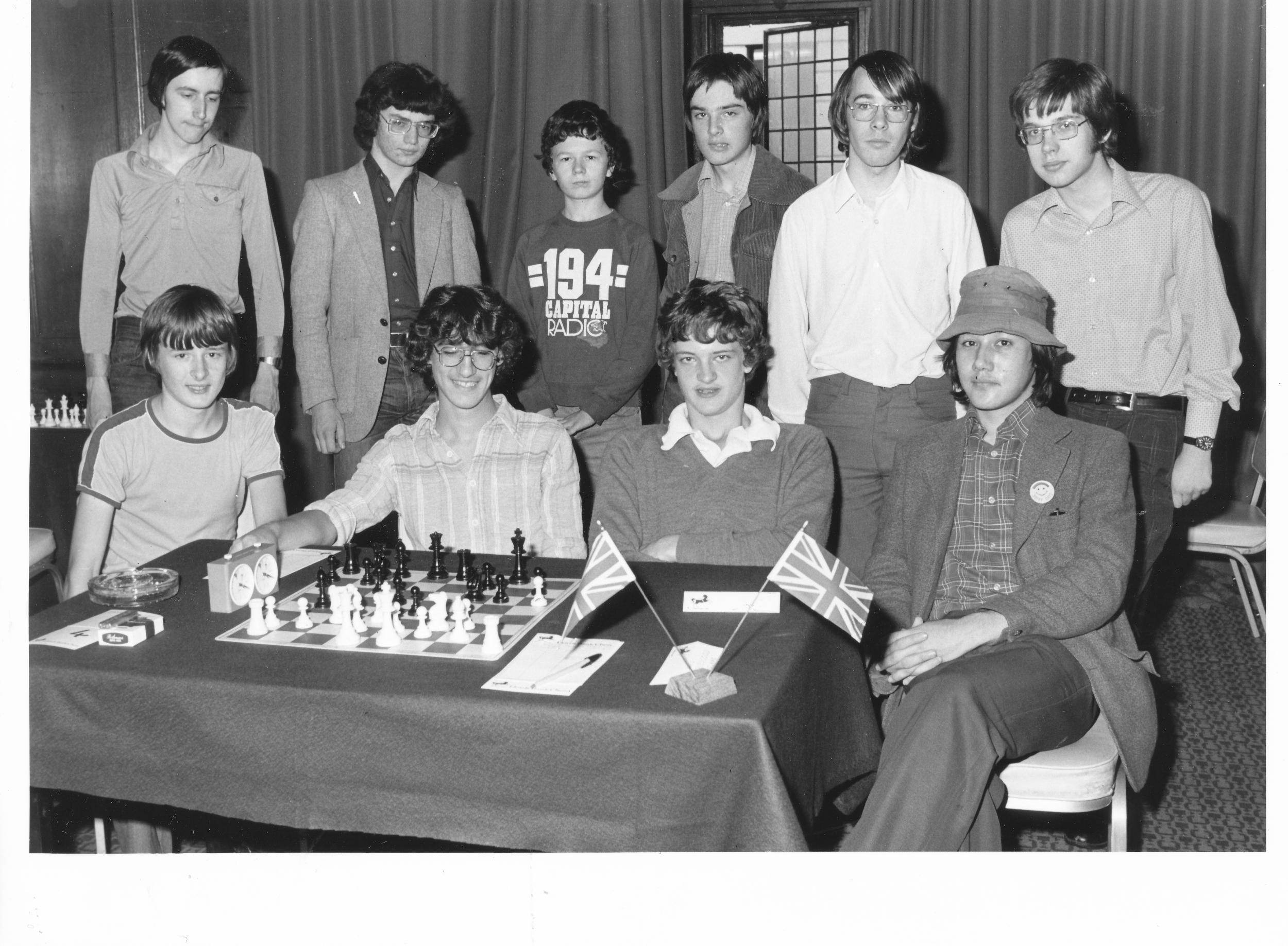
John now maintains his Hawkonomics blog and is a keen user of Twitter.
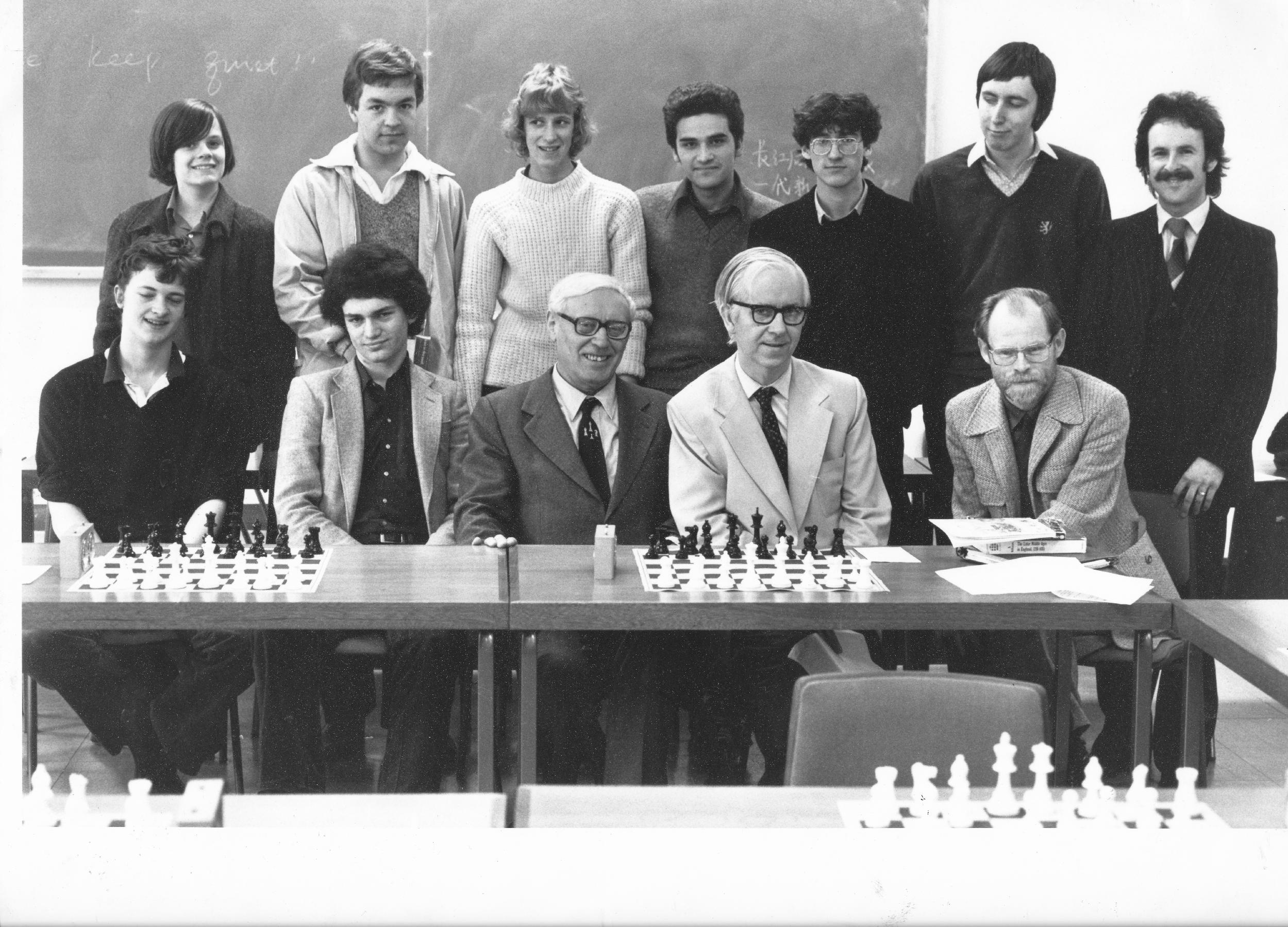
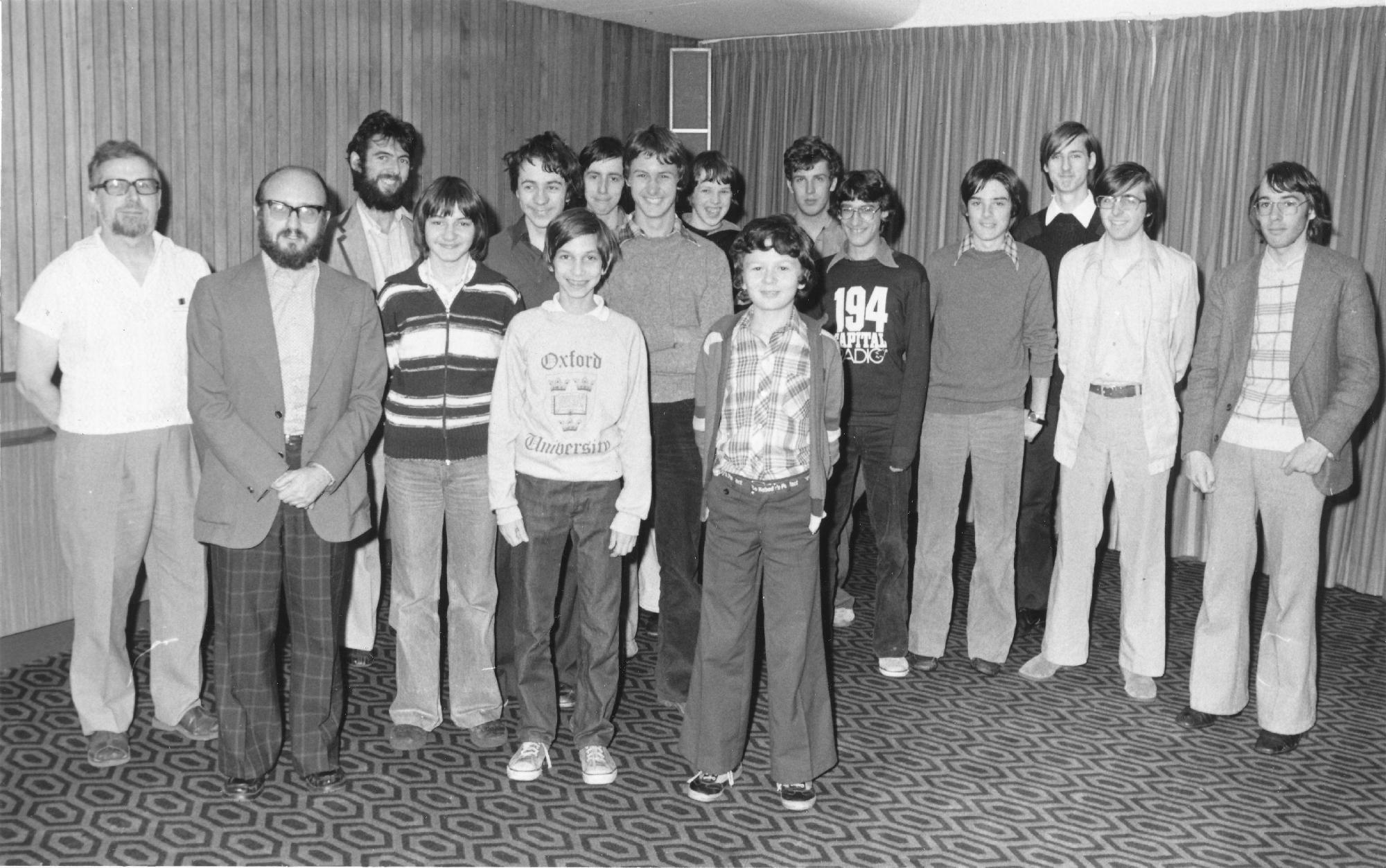
Happy Birthday IM Gavin Wall (05-xii-1968)
Remembering Dr. James Aitken (27-x-1908 03-xii-1983)
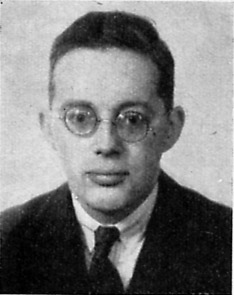

We remember Dr. James Aitken who passed away on Saturday, December 3rd, 1983.
James Macrae Aitken was born on Tuesday, October 28th 1908 in Calderbank, Lanarkshire, Scotland. His parents were David Aitken and Mary Ann Parlane Baird.
His very early history is best recorded here at the wonderful Chess Scotland web site.
He attended Balliol College, Oxford.
Luckily for all of us Scottish chess enthusiast Geoff Chandler is transcribing JMAs games from the players personal scorebooks. We hope to see these games appearing in Britbase and other locations in the near future.
From The Anglo-Soviet Radio Chess Match by Klein and Winter :
“JM Aitken was born in 1908 in Scotland, and learned chess at the age of eight. He played several times in the Scottish Championship, and won it in 1935. In the Stockholm international team tournament, 1937, he played for Scotland. His best performance in international chess was at Hastings, 1945, when he scored 6 points and did best among the British contingent.
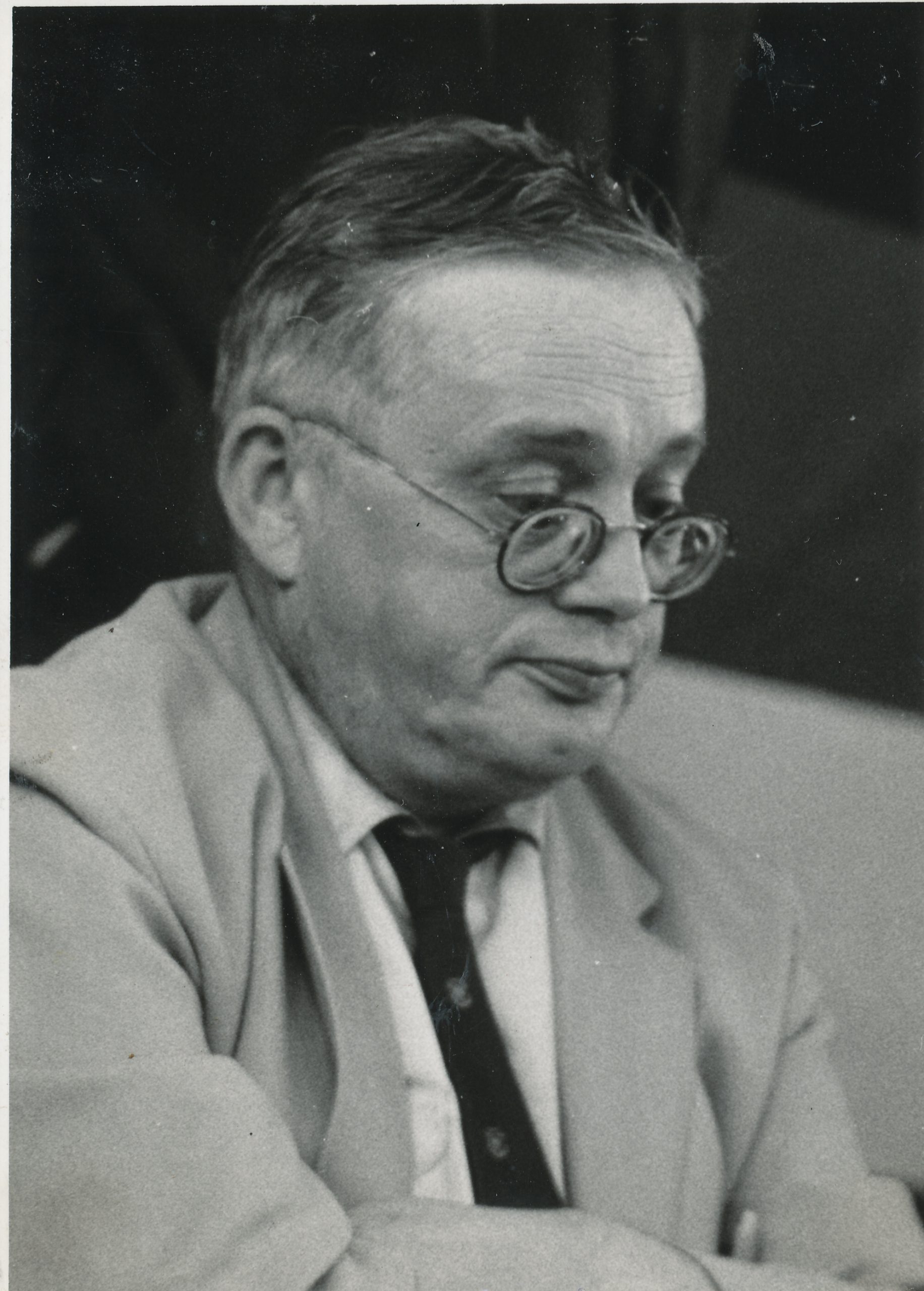
He is a graduate of both Oxford and Edinburgh, and a Ph.D. At the beginning of the war he joined the Foreign Office. ”
The Aitken Variation is a line recommended in the British Chess Magazine of 1937 of the Giuocco Piano as follows :
From British Chess Magazine, Volume CIV (104, 1984), Number 1 (January), page 65 :
“Dr. James Macrae Aiken (27 October 1908 – 3 December 1983) died at his home in Cheltenham on the Saturday morning when he was due to turn out in a county match that afternoon. Sh he was active to the end, since he played in the veterans’ competition in both at the Southport BCF Congress and at the Guernsey tournament in October.
Ten times Scottish Champion, the worthy doctor represented Scotland at Olympiads both pre- and post-war. At the 1937 Stockholm Olympiad he beat Ståhlberg, while later on he also had the grandmaster scalps of Bogoljubow and Tartakower to his credit.
He retired from his work at the Foreign Office some ten years ago, and continued playing in West Country chess, always taking a high board for Gloucestershire. At the BCM we have a particular cause to remember him with gratitude since he was both a book reviewer and occasional annotator for two decades, and a life-long subscriber.
As a person he was always friendly and objective in his judgements both of chess positions and personalities. Your editor recalls many interesting conversations with him at BCF Congresses. The loss is greatest, of course. for Scottish Chess.
Perhaps we may close on a lighter note, since the following anecdote reminds one that Dr Aitken also turned out for Great Britain in matches just after the war. At an early FIDE Congress after the war the first official FIDE list of masters and grandmasters was being drawn up. The BCF made application for recognising the mastership of HE Atkins. The Soviet delegate, Kotov, objected since he thought he heard the name of Aitken, whom he knew had lost both games to Bondaresvky on board eight of the 1946 GB-USSR Radio Match. It was gently pointed out that the application concerned a player who had come ahead of no less than Chigorin at Hannover 1902. End of objection!
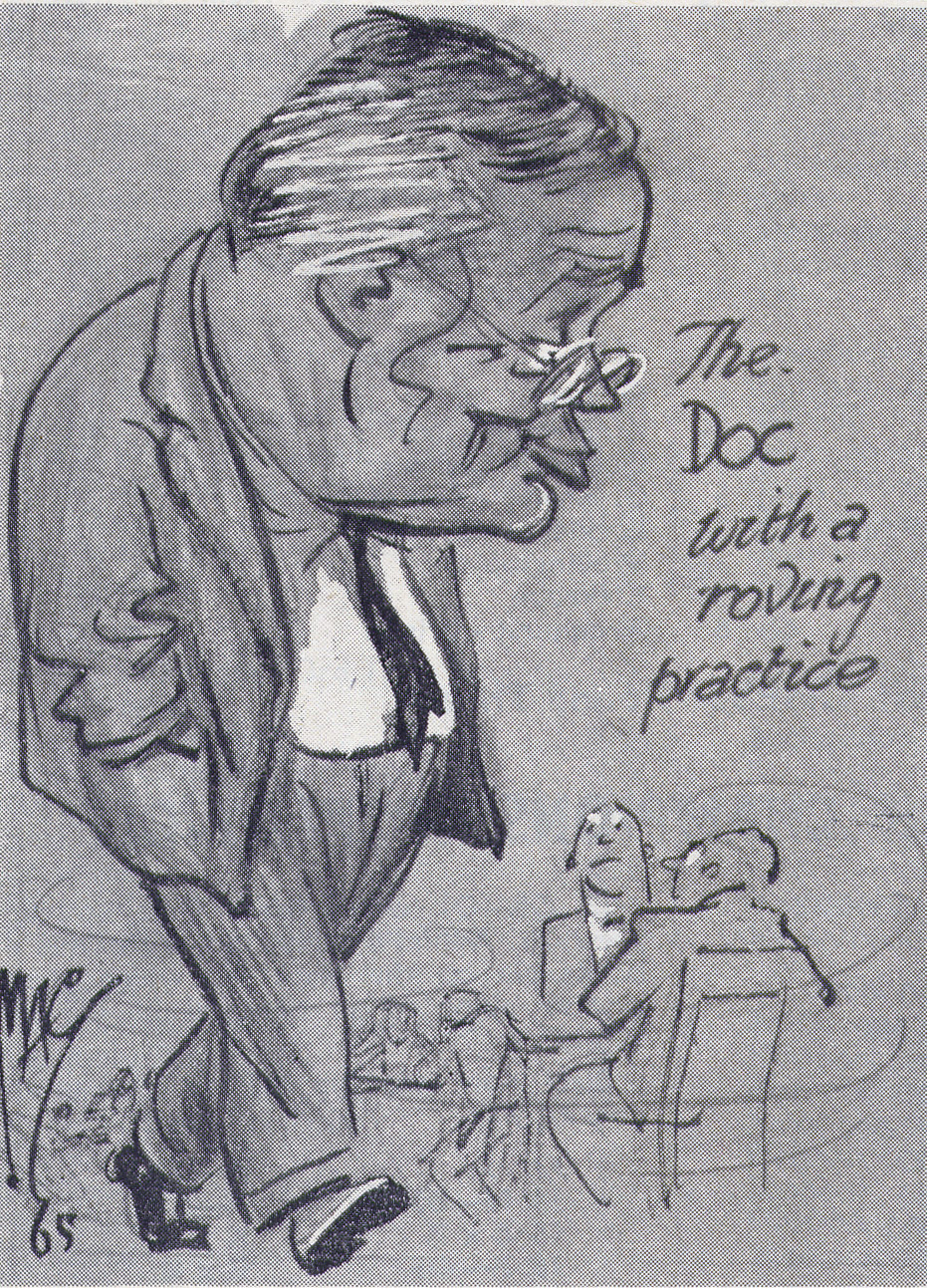
We take this game from the Bournemouth tournament played on the eve of the Second World War.
From The Encyclopedia of Chess (Batsford, 1977), Harry Golombek OBE :
“Talented Scottish amateur who won the Scottish championship ten times, Dr. Aitken’s chief international activity was representing Scotland in the Olympiads.
At Stockholm 1937 he scored 32.4% on top board but he had the distinction of beating the Swedish grandmaster Ståhlberg. At Munich 1958 he scored 67.6% on 2nd board; at Tel Aviv 1964, 28.1% on 2nd board; at Skopje 1972, 38.9% on 6th board.”
Both Sunnucks and Hooper & Whyld are silent on Aitken.
From Wikipedia :
“James Macrae Aitken (27 October 1908 – 3 December 1983) was a Scottish chess player.[1][2] Aitken was born in Calderbank, Lanarkshire, Scotland. In 1938 he received a PhD from Edinburgh University on the topic of ‘The Trial of George Buchanan Before the Lisbon Inquisition’.[3]
Aitken learned chess from his father at age 10.[4] He was Scottish champion in 1935, 1952, 1953, 1955, 1956, 1957, 1958, 1960, 1961 and 1965, the latter jointly with PM Jamieson.[1] He was also London Champion in 1950.[1] In 1959 he had his best result in the British Championship, finishing tied for seventh place.[4] Aitken represented Scotland in four Chess Olympiads. He played top board at Stockholm 1937, scoring only 32.4% but he did defeat Swedish GM Gideon Ståhlberg[4][5] and draw with American GM Samuel Reshevsky.[4] He played second board at Munich 1958 and Tel Aviv 1964, scoring 67.6% and 28.1% respectively. Aitken played sixth board at Skopje 1972, scoring 38.9%.”
Aitken was Southern Counties (SCCU) Champion for the 1948-49 season
“Aitken represented Great Britain in matches against the USSR and Yugoslavia.[4] In the 1946 radio match between the United Kingdom and the USSR he lost his match with Igor Bondarevsky on board 8.[6] Aitken defeated GM Savielly Tartakower at Southsea 1949[4][7] and GM Efim Bogoljubow at Bad Pyrmont 1951.[4][8]
During World War II, Aitken worked in Hut 6 at Bletchley Park on solving German Enigma machines.[9] On 2 December 1944 Bletchley Park played a 12-board team match against the Oxford University Chess Club. Bletchley Park won the match 8–4 with C.H.O’D. Alexander, Harry Golombek, and Aitken on the top three boards.[10] Aitken wrote many book reviews for the British Chess Magazine.[11] Aside from chess his hobbies included golf, philately, bridge, and watching cricket.[4] He died in Cheltenham in 1983, aged 75.[2]”
Another biography may be found here at the wonderful Chess Scotland
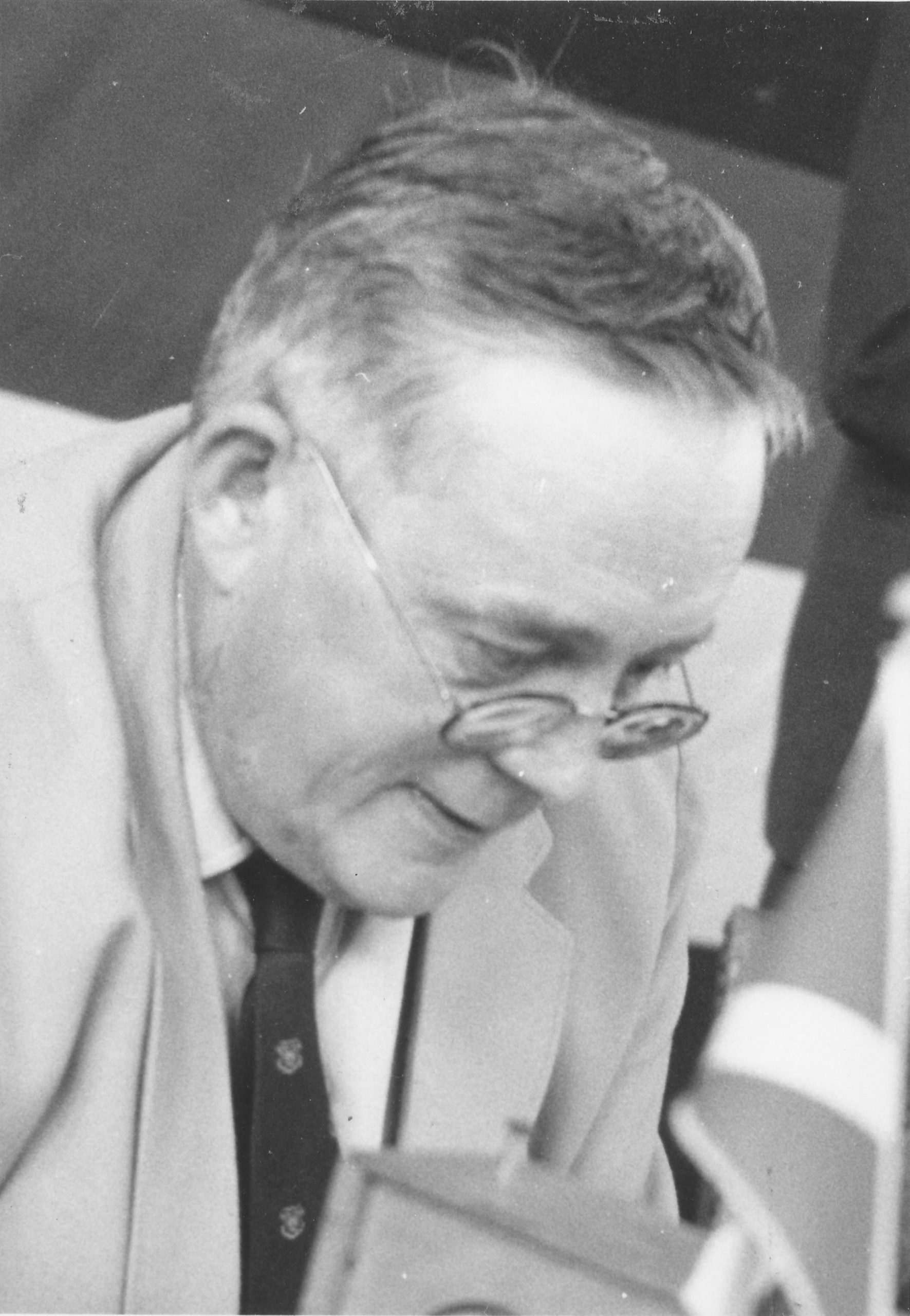
Remembering Dr. A(lfred) Christopher Reeves (19-ii-1939 03-xii-2012)
BCN remembers Dr. A(lfred) Christopher Reeves who passed away on Monday, December 3rd, 2012 in St. Agnes, Cornwall. His probate record (#4073868) is dated December 3rd, 2012 being recorded in the Bristol registry.
Alfred Christopher Reeves was born in Wharfedale, Yorkshire on Sunday, February 19th, 1939. His mother’s name was Tomlin.
Alfred detested his first name to the extent that he asked people to call him Christopher and, when asked, told them that the A was for Arthur. For this reason much of the chess literature uses Arthur whereas public records use Alfred.
In British Chess Magazine, Volume 133 (2013), Number 1 (January), page 2 we have this obituary from James Pratt:
“Alfred Christopher Reeves (Leeds, 19 ii 1939 – St Agnes?, 3 xii 2012). Chris Reeves was a FIDE Master of Composition. He toyed with entering the priesthood but became a child psychotherapist. He started composing (“…my solace and diversion …”) in 1960, largely specialising in the orthodox two move field. Though not a prolific composer, his work was known worldwide.
He was Sub-Editor of The Problemist”
From the The Encyclopaedia of Chess (Batsford, 1977), Harry Golombek OBE, John Rice writes:
“British problemist, output consists of skilfully constructed two-movers in the modern style.”
From The Encyclopedia of Chess (Robert Hale, 1970 & 1976), Anne Sunnucks wrote: :
“Problem composer. Since 1960 he has composed about 70 modern-style two movers, and is considered to be one of the most talented British composers. His originality and technique enable him to build into tangible form what would be no more than a passing idea for most composers. He has edited the problem section of Correspondence Chess, and he controlled BCF tourneys and International Team matches.”
From British Chess (Pergamon Press, 1983) Botterill, Levy, Rice and Richardson we have this:
“I was born on February 19th, 1939, the second son of a doctor who practised in a busy Yorkshire coal-mining town. As a youngster I acquired a taste for chess problems as soon as I learnt the moves of the game.
I owe my initiation to the admirable column which DM Davey used to run in the weekly review The Tablet and to the enterprise of one of the masters of the boarding school to which I was sent when still quite young. Davey’s column catered for novice chess problemists like myself by conducting graded solving tournaments with modest handicaps.
These tournaments ran conveniently the length of the school term, just long enough to sustain a young person’s enthusiasm, The teacher in question used to put the week’s problem up on the school noticeboard and dozens of small schoolboys participated as a result. The Tablet column was not only a boon for beginners like me. It had a very discriminating band of solvers who were given ample space to express their views on each week’s problems. This had the additional effect of making it a popular forum for budding composers who need the stimulus and encouragement of audience response in what is, after all, a very solitary sort of pastime.
My fascination with chess problems soon diverted my energies away from the game itself. I was eight when I began solving. Another 13 years elapsed before I seriously tried my hand at composing. My immediate inspiration was the example of the then young trio of British composers, Barry Barnes, Michael Lipton and John Rice. Their latest work incorporating, try-play, and often exploiting complex patterns of relationships between mates, was regarded as unacceptably, ultramodern, in some quarters but found ready appreciation with the solvers of Davey’s column.
Other sorts of problems I had enjoyed; these I wanted to emulate. The powerful attraction their work had on me has made me chary ever since of the strictures of self-appointed guardians of chess problem ‘taste’, who suggest that the modern two-mover cannot hold the same interest for the solver as the more traditional type. It certainly did not have a negative effect on me.
Problem I was one of my earliest compositions, in fact the first to gain any sort of award. At the time I was a theological student destined for the priesthood. I recall having felt some scruples about indulging in the frivolous pastime of chess problem composition not that it prevented me from becoming thoroughly addicted!
I have found that a bad conscience makes a good chess problem, and the greatest spur for composition is the feeling that one should really be busy doing something else. The problem shows a duel between the white queen and the black knight on d5, each of whose eight possible moves feature as a unique defence against one of the white queen tries. Solvers have often found the key to this problem’ quite elusive.
Problem I
The Tablet, 30th June, 1962
3rd Honorary Mention BCPS Ring Tournament
White to play and mate in 2
1.Qa1?…Nc7!
1.Qa4?…Nb6!
1.Qb1?…N5b4!
1.Qc1?…Nc3!
1.Qe1?…Ne3!
1.Qf1?…N5f4!
1.Qg4?…Nf6!
1.Qg1?…Ne7!
Key! Qb3!
The 1960s were my golden period of problem composition. They were my solace and diversion as I passed by way of theological studies through an Oxford degree to the foothills of a different career from the one I had originally envisaged, not the ‘cure of souls’ but the management and treatment of emotionally disturbed children and their families. By the end of the decade I was
already engaged in working as a Child Psychotherapist. Since then I have found that human problems have tended to displace my former involvement with problems of the chess pieces. Whereas
between 1960 and 1970 I composed seventy problems, in the subsequent decade I could manage only a dozen more. The reason for this slowing down in production, however, has not only been the demands of personal, family and professional life.
As a composer I have concentrated almost exclusively on the orthodox two-move field, one which if not yet exhausted nevertheless presents a major challenge to the composer to find something new to say or some new way of saying it. It is no accident (though I admit to a slight feeling of regret) of heterodox problems has expanded enormously in the past few years.
Of my eighty or so problems, fifty have been honoured in tournaments, ten with First prizes, ten with other prizes and the rest with Honourable Mentions and Commendations. My ambition is to
reach a respectable century of compositions, though I being to wonder whether I shall ever make the mark. I would also like to reach the FIDE Master norm for problem composition. I have
had twenty of my problems included in the triennial FIDE Albums so far, a few of them joint compositions. Here again, however, my productivity (or lack of it) may eventually tell against me.
Still, the problemist must always keep the business of honours in perspective. Composing problems is an essentially private business. Your opponent is the power of the pieces, not a fellow sitting opposite Vou. Unlike the chess player, one can keep one’s defeats to oneself when one puts the pieces away after a fruitless evening pondering over a board, so it seems only fair that
one’s successes likewise should be modestly recorded.
By a coincidence two of the three problems which I have selected to round off this brief note about myself and my compositions are ones which got no recognition from the tournament judge
at the time, although I count them amongst my best works.
I have chosen a trio of problems all roughly on the same theme, namely, the four possible moves of the pawn from its starting square. In chess problem parlance this is called the BP4M* theme when applied to the Black pawn, and the Albino theme when applied to the White pawn.
II and III show two ways in which four mates can be provided to meet each of the BP4M moves, only to be changed in the next phase of play. In II, the change is between mates set before the key and those operative after it; in III, the change is more radical, involving the transfer of the WR from one position to another, thereby creating two separate but related (or ‘twin’) problems. Incidentally, a good way to begin to get a taste of what composing involves is to take a problem like III and try to express the theme in full (here the changed BP4M) without resorting to the twinning device.
My last example, IV, shows a duel between white and black pawns, with the four Albino tries being met by the four possible BP4M defences.
(* BP4M is BCNs replacement for a word starting with p now considered by some as offensive.).
Whilst the player may rejoice in a victory soundly accomplished I can think of few pleasures to compare with the satisfaction which comes from accomplishing the sort of task which IV entails, especially when one is fairly sure that it has not been successfully achieved before. For me, at all events, this is what two-mover chess problem composition is all about: its is the ‘art if the all-but-impossible’!”
Problem II
Die Schwalbe August, 1965
White to play and mate in 2
1…dxc6+ 2. Bxc6
1…d6 2.Nd5
1…d5 2.Qb4
1…dxe6 2.Bc8
Key 1.Qxe5! (2.exd7)
1…dxc6 2.Nxc6
1…d6 2.Qf6
1…d5 2.Qc7
1…dxe6 2.Qxe6
1…Rd5+ 2.Nd5
Problem III
1st Prize
Problemist Twin Tournament 1966-67
White to play and mate in 2
Problem IV
Probleemblad, May, 1965
White to play and mate in 2
Here is a collection of his compositions from the super Meson Database
Clearly Chris was a hugely popular figure in the problem world. Here is a collection of tributes from the BCPS.

